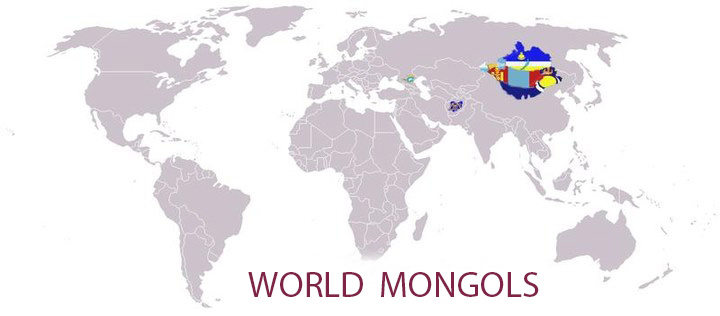~ 1,000 Pics About Mongols ~
Printed From: History Community ~ All Empires
Category: Regional History or Period History
Forum Name: Steppe Nomads and Central Asia
Forum Discription: Nomads such as the Scythians, Huns, Turks & Mongols, and kingdoms of Central Asia
URL: http://www.allempires.com/forum/forum_posts.asp?TID=34170
Printed Date: 27-Apr-2024 at 18:04
Software Version: Web Wiz Forums 9.56a - http://www.webwizforums.com
Topic: ~ 1,000 Pics About Mongols ~
Posted By: lionmaster
Subject: ~ 1,000 Pics About Mongols ~
Date Posted: 08-Dec-2013 at 17:05
|
Hunnu Uls (also know as Hun Empire, or Xiongnu Empire), the dominance of all Asia, it was the first Dynasty in Mongolian history.  the "Grey wolf and white doe" carpet, was found in the Hunnu tomb northern Mongolia Noyon uul and has been dated to between the 3rd century BCE and 1st century CE.  At the beginning of "The Secret History of the Mongols" it is related that "Borte-Chino (grey wolf), born according to the will of the High Sky, was the ancestor of Mongols. His wife was Goa-Maral (white doe). They appeared, having swum across the Tengis (lake baikal). They led a nomadic life near the sources of the Onon-river, on the Burkhan-khaldun hill, and Bata-Chigan was their descendant." |
Replies:
Posted By: lionmaster
Date Posted: 08-Dec-2013 at 17:31
|
One of the greatest kings of the Huns, Modu, originally known as Baatar (means "hero" in Mongolian) was the son of Tumen, his efficiently organized state, strong and powerful army was an example across the Eurasian steppe. The great king was famous for his honesty and justice. An effective ruler, he first policed the country, then launched his armies to unite the land of other related nations and took land from the Chinese Han Dynasty. The Hun horsemen set out north, south east and west. First he marched on the Donghu, the Hun’s eastern neighbours, and brought them under his rule in 208 BC. After his Donghu campaign (the Donghu split into Syambi and Wuhuan); he defeated the Dingling and other peoples living in Northern Mongolia and finally he brought the Yuezhi under his rule in 203 BC. After these conquests all Hun lords submitted to him. With these victories, he was able to gain control of the important trade routes, which later supplied the Huns with a large income. In 200 BC, Modu fought a three-year campaign with the Han Dynasty of China, and decisively defeated the Han ruler Gaodi(Whose name is Liu Bang) (by shrewdly trapping him and his forces), forcing him to pay humiliating yearly tributes to the Huns: when Emperor Gao of Han Dynasty launched a military offensive against him, Modu lured the Han army into a trap and ambushed the emperor reputedly with 300,000 elite Hun cavalry, and encircled them for 7 days at Baideng. The emperor was cut off from supplies and reinforcements. The siege was only relieved when the Han royal court sent spies to bribe Modu's wife. The result of this campaign resulted in Han China resorting to the humiliating "marriage alliance" strategy with Hun for the next 70 years. After his Chinese campaign, Modu forced the Yuezhi and the Wusun to become vassals of the Huns. Despite the violent circumstances by which Modu came to power, the Hun leadership passed on with relatively few problems for 150 years after the beginnings of his rule.  Lord of the Sky In the 19th century the famous Buryat-Russian scholar, Banzarov, was the first to realize that the meaning of the title Shanyu in the Chinese sources is Tengri Khan, which in literal translation is Tian Wang i.e. heavenly king. With his fearsome horsemen, only the ruler who united many peoples was given this honorific name. It is important to mention that the Chinese word tian comes from the Hun word tengri. It was not the Huns who adopted this title from the Chinese but conversely; the Chinese Zhou Dynasty from 1045 B.C. started to use this Hunnish word to name their supreme deity. According to the Mongolian Uchiraltu the grand king of the Huns was called Tengri Khan which was then pronounced Chengri. Perhaps, this rank can be found in the name of Attila’s second son, Dengizik. In the Central Asian steppes the royal title was not forgotten; a thousand years after Baatar, we can recognize this ancient Hunnish rank in Genghis Khan’s name. Genghis Khan united the Mongolian people. The Hungarian name Chenger -which first appears in the ancient Central Asian Khwarezm Dynasty, then later in the Hungarian village of Csenger, and lives on in the Csengeri family name. The Huns once dominated Europe in 5th century.    |
Posted By: lionmaster
Date Posted: 08-Dec-2013 at 17:42
|
The Hunnu Empire was exhausted from natral disaster and internal war, the decayed Hunnu Empire was finally defeated by Syambi, Wuhuan, Dingling and China. In 49 AD the Mongolic Syambi ruler Bayan Khan raided and defeated the Hunnu army, killing 2000. From 93 AD the Syambi began to occupy the lands of the Hunnu. In 97 AD Feijuxian in Liaodong was attacked by the Syambi, and the governor Qi Sen was dismissed for inaction. Other Syambi rulers who were active before the rise of the Syambi emperor Tanshihuai (141–181) were Yanzhiyang, Lianxu and Cizhiqian. Cizhiqian fought against the Chinese Han dynasty in the period 121–132 with mixed results. The Syambi reached their peak under Tanshihuai Khan (reigned 156–181) who expanded the vast Syambi Empire. The decayed Hunnu Empire was dispersed by the Syambis in 85 and again in 89 by the Chinese. By around 100 AD the Hunnu Empire had been replaced by the Syambi Empire. A research project of 2007 (Yi Chuan, 2007) was aimed at the genetic affinities between Tuoba Syambi and Hunnu populations. Some mtDNA sequences from Tuoba Syambi remains in Dong Han period were analyzed. Comparing with the published data of Hunnu, the results indicated that the Tuoba Syambi presented some close affinities to the Hunnu, which implied that there was a gene flow between Tuoba Syambi and Hunnu during the two southward migrations.  The Syambi had a massive impact on China. Murong or Muren refers to a Syambi tribe who are a Mongolic people attested from the time of Tanshihuai (reigned 156-181). Different strands of evidence exist linking the Murong to the language family of Mongols. The Former Yan (337-370), Western Yan (384-394), Later Yan (384-409) dynasties as well as the Tuyuhun Kingdom (285-670) were all founded by the Murong. Tuoba was an early name for a clan of the Syambi, in the Old Turkic language, they were referred to as Tabgach . The Tuoba founded the Northern Wei dynasty (386–535) around the Yellow River delta. Later the Tang Empire was established by Syambi, Emperor Taizong of Tang Dynasty was an ethnic Syambi, his father's side was descendant of Liangzhao Wuwang(Tuoba clan) and his mother Empress Taimu also was an ethnic Syambi. Emperor Taizong allied with Shibir Khan of the Turk Empire, they conquered China and established Tang Empire. Murong Syambi  |
Posted By: lionmaster
Date Posted: 08-Dec-2013 at 17:51
|
The Five Foreign Tribes Invasion of China (五胡乱华) refers to a series of five non-Chinese tribes or tribal confederacies against the Chinese Western Jin Dynasty (西晋). The five foreign tribes, namely the Hunnu, Syambi, Jie, Qiang and Di, successfully captured the China's capital of Luoyang as well as Emperor Huai of Jin, destroying the Chinese regime, after which a large series of regional states and regimes were set up, the most prominent of which are known as the Sixteen Kingdoms (五胡十六国, 'sixteen kingdoms of the five foreign tribes'). The chaos and devastation of the north also led to a mass migration of Chinese to the areas south of the Huai River, where conditions were relatively stable. This exodus is known historically as the Southbound migration of the Jin nobility (衣冠南渡, literally 'garments and headdresses moving south'). While the era was one of military catastrophe, it was also one of deep cultural interaction. The nomads introduced new methods of government, while also encouraging introduced faiths such as Buddhism. Meanwhile, the southward exodus of the cultured Jin elite, who then spread across the southern provinces including modern-day Fujian and Guangdong, further integrated the areas south of the Yangtze River into the Chinese cultural sphere.  The Sixteen Kingdoms were a collection of numerous sovereign states mainly established by Syambi and Hunnu in China proper and its neighboring areas from 304 to 439 AD after the retreat of the Jin Dynasty (265-420) to South China. Almost all rulers of the kingdoms were part of the Syambi/Hunnu ethnicity and claimed to be the emperors. The Chinese founded the four states: Northern Yan, Western Liang, Former Liang and the state of Wei. Six Chinese rulers of the Former Liang remained titularly under the government of the Chinese Jin Dynasty. The Syambi Northern Wei Dynasty is not counted as one of the Sixteen Kingdoms even though it was founded during the period. The Sixteen Kingdoms Period was one of the most devastating periods in Chinese history, the foreigners uprising took over much of the Chinese heartland. It did not end until Jin reclaimed much of central China while the Syambi Northern Wei took over the areas north of the Yellow River. Prince of Lanling of the Syambi Northern Qi Dynasty. According to "The Book of Northern Qi", Prince of Lanling had a beautiful face thus he always wore a terrible mask when he fought in battles to avoid distraction.  The origin of the Turks By the middle of the 15th century, the great southern Hunnu dynasties had declined but the Asina-nations, who originated from the Huns were on the rise. The Chinese chroniclers recorded a few interesting legends about them. The yearbook of the Zhou Dynasty from the sixth century mentions that the ancestors of the Turks lived on the coast of the West Sea and they were allied with the Huns. Asina was their leading tribe. Once they were at war with other tribes and all members of the Asina clan were massacred. Only a ten year old boy survived for whom the soldiers felt sorry and spared hislife, but they mutilated him so he could not rebel against them. He was left in the wild where a she-wolf took care of him and raised him along with her puppies. When the child grew up he married the she-wolf that soon bore a child. His enemies found out about the boy being alive and set out to destroy him. Then with celestial help- the she-wolf and the boy fled to the Dzungarian caves where their ten sons were born. When they grew up they strengthened the Asina clan and recaptured their ancestors’ lands. The grateful descendants commemorated the she-wolf by drawing a wolf’s head on their flags. Akin Shad led them out of the cave and settled them on the southern slopes of the Altai Mountain. The yearbook of the 7th century Sui Dynasty probably has the most realistic story of the Turks. Thus, the Turkic Asina clan originated from the Northern Hunnu. In 431 a great war began between the Syambi Northern Wei Dynasty and the Hunnu states. The Wei king, Taiwu, first defeated the son of Helian and ended the rule of the Hunnu in Ordos, then he attacked the Northern Liang, too. Their king, Zhugu had to flee and seek protection on the West in the Altai Mountains where he accepted the authority of the Nirun Uls (Rouran Khanate), who were one of the descendants of the Huns. His people were excellent blacksmiths they made their rulers’ armour. The name "Turk" means shield. From the different legendary tales we can draw the inference that Turks were the descendants of the Huns. They emerged from the Altai Mountains and their leading nation was the Asina clan. In the middle of the 6th century AD, Bumin Khan managed to unite the tribes from the steppe, they defeated their previous rulers, the Rouran Khanate, and at an amazing pace they established an enormous empire from Lake Baikal to the Great Wall of China and from the Altai Mountains to Manchuria. The Turkic carved runic inscriptions, used the symbols they probably received from the Huns, whose language and literacy was thus transmitted on to posterity. Tureg Uls (Gokturk Empire) 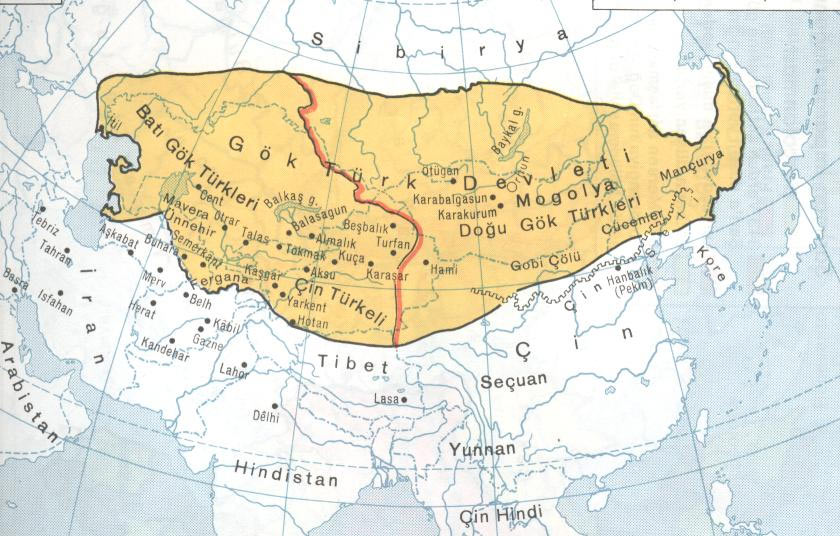 head of Kul-Tigin, a general of the Second Gokturk Khanate. He was a second son of Ilterish Shad and the younger brother of Bilge Khan. 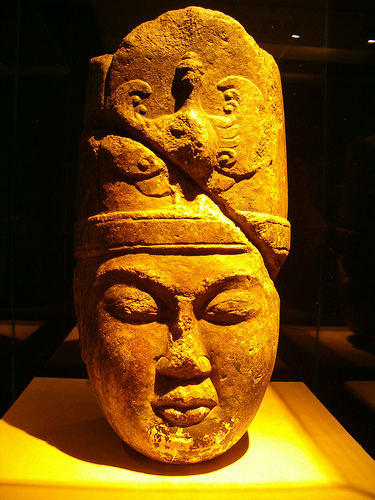 Prince Kul-Tigin descended from the "Gold (Khan's) clan of the ancient tribe Asina (Hot.-Sak. blue) called Shar-Duly (Middle Persian zarr duli "Golden bird Duli", i.e. "Golden/Red Raven"). All royal Oguzes traced their descent from this mythical bird Dulu/Tulu. The headdress on the glabella part of Kül-Tegin sculpture in the Husho-Tsaidam enclave (Orkhon, Northern Mongolia) carries a bird with wings spread like an eagle, personifying a Raven. |
Posted By: lionmaster
Date Posted: 09-Dec-2013 at 05:16
|
Migration routes of Turks from Mongolia  Anlushan, was a general who rebelled against the Tang Empire. His name was transcribed into Chinese as Anlushan(安禄山), Āluòshān (阿犖山) or Gáluòshān (軋犖山). Anlushan was of Turk and Sogdian origin. He rose to prominence defending the northeastern border from the Khitan and other northern threats. He was summoned to Chang'an, the Tang capital, several times and managed to get the favor of Chancellor Li Linfu and Emperor Xuanzong. This allowed Anlushan to amass significant military power in northeast China. After the death of Li Linfu, his opposition with rival generals Geshu Han and Yang Guozhong created military tension within the Empire, which was increased by the promotion of Yang Guozhong to Chancellor. In 755, Anlushan, following 8 or 9 years of preparation, rose in armed revolt, proclaiming himself to be the ruler of his own, new dynasty, precipitating a series of catastrophic events often known as the Anlushan Rebellion, named after him (although sometimes referred to as An-Shi after the An and Shi families). An Lushan himself did not live to see the final end to open fighting, which lasted on into 763. Viewed as paranoid and dangerous, An was assassinated in 757 by his own son, Anqingxu, after which his Yan dynasty continued to spiral into a turmoil that eventually led to its eventual collapse in 763.  Shisiming, or Shisugan (史思明), was a general of the Tang Empire who followed his childhood friend Anlushan in rebelling against Tang, and who later succeeded Anlushan's son Anqingxu as emperor of the Yan state that Anlushan established. Shisiming was of Turk extraction, and was said to be thin with smooth skin, with an impatient disposition.  Head of male royal figure of Seljuq Turk Empire in Persia, 12–13th century, found in Iran. 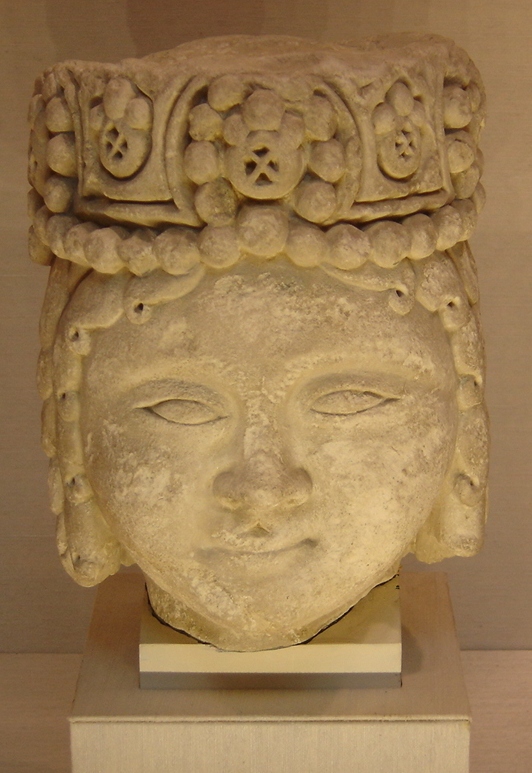 |
Posted By: lionmaster
Date Posted: 09-Dec-2013 at 05:32
|
Khyatan Uls (Khitan Empire) 
Tatar was one of the five major Mongolian tribal confederations (khanlig) in the 12th century. The name "Tatar" was first recorded on the Kul Tigin monument as "Otuz Tatar Bodun" (Thirty Tatar tribe) CE. 732. According to "Book of Song" (section Joujan), "Joujan's (Rouran Khanate) another name is "Tatar" or "Tartar", and they were Hun tribe". The Tatars inhabited the north-eastern Gobi in the 5th century. After the fall of the Khitan Empire, the Tatar tribe experienced pressure from the Jurchen Empire and were urged to fight against the other Mongol tribes. After the establishment of the Mongol Empire, the Tatars were subjugated by the Mongol Empire under Genghis Khan. Under the leadership of his grandson Batu Khan, they moved westwards to the plains of Russia. Mongolia in 12th Century 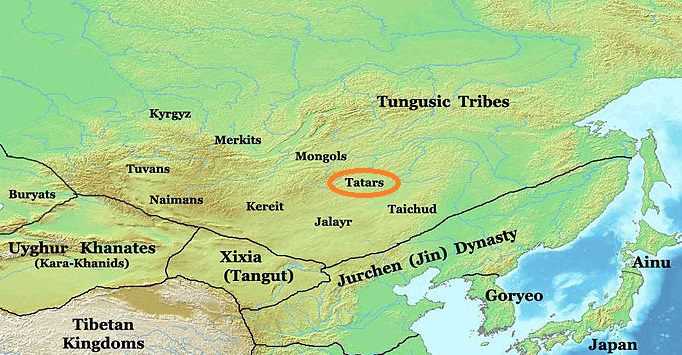 Khabul Khan was a son of Tumbinai Setsen and great-grandson of the Khaidu, and was the great-grandfather to Genghis Khan. When the Jin (Jurchen) army entered Mongolia with the intention of finishing Yelü Dashi, Khabul Khan successfully repelled the invasions of Jin Empire. In 1135, Khabul invited by Taizong of Jin and he pulled the beard of the Taizong at the court of the Jin. Although, the Jin army pursued him into southern Mongolia, Khabul escaped and returned with a larger army to pillage Jin Empire. Though Khabul Khan had 7 sons, he nominated Ambaghai, a son of Sengun Bilge from Taichuud clan, as his successor. |
Posted By: lionmaster
Date Posted: 09-Dec-2013 at 05:53
|
Mongol soldiers slaughtered men and abducted women in Europe.    |
Posted By: lionmaster
Date Posted: 09-Dec-2013 at 06:21
|
Battle of Legnica,Part of the Mongol invasion of Poland. A combined force of Poles, Czechs and Germans under the command of the Polish duke Henry II the Pious of Silesia, supported by feudal nobility and a few knights from military orders sent by the Pope, attempted to halt the Mongol invasion of Europe. The battle came two days before the Mongol victory over the Hungarians at the much larger Battle of Mohi. 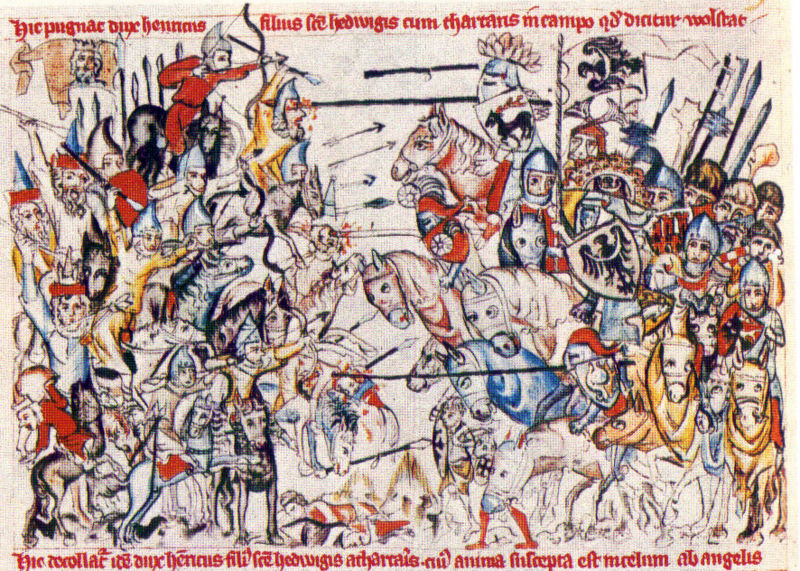 Battle of Mohi,1241the main battle between the Mongol Empire and the Kingdom of Hungary during the Mongol invasion of Europe. It took place at Muhi, southwest of the Sajó River. After the invasion, Hungary lay in ruins. Nearly half of the inhabited places had been destroyed by the invading armies. Around 15–25 percent of the population was lost, mostly in lowland areas, especially in the Great Hungarian Plain, the southern reaches of the Hungarian plain in the area now called the Banat and in southern Transylvania.  Batu captured a Rus city. 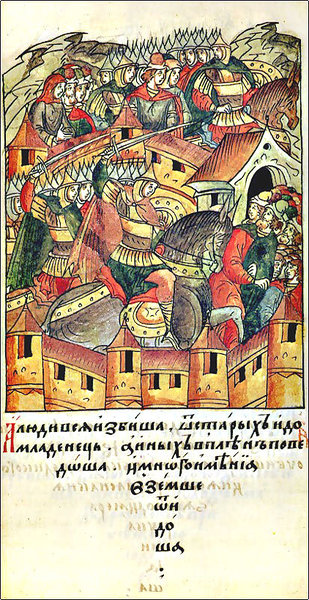 Mongol massacre in Europe.  Drawing of Mongols outside Vladimir presumably demanding submission before its sacking.  The Mongol invasion of Hungary in 1285. The dismounted Mongols, with captured women, are on the left, the Hungarians, with one saved woman, on the right.  A Reply Letter from Güyük Khan to Pope Innocent IV: "By the power of the Eternal Heaven, we are the all-embracing Khan of all the Great Nations. It is our command. This is a decree, sent to the great Pope that he may know and pay heed. After holding counsel with the monarchs under your suzerainty, you have sent us an offer of subordination which we have accepted from the hands of your envoy. If you should act up to your word, then you, the great Pope, should come in person with the monarchs to pay us homage and we should thereupon instruct you concerning the commands of the Yasak. Furthermore, you have said it would be well for us to become Christians. You write to me in person about this matter, and have addressed to me a request. This, your request, we cannot understand.Furthermore, you have written me these words: "You have attacked all the territories of the Magyars and other Christians, at which I am astonished. Tell me, what was their crime?" These, your words, we likewise cannot understand. Chinggis Khan and Ogatai Khan revealed the commands of Heaven. But those whom you name would not believe the commands of Heaven. Those of whom you speak showed themselves highly presumptuous and slew our envoys. Therefore, in accordance with the commands of the Eternal Heaven, the inhabitants of the aforesaid countries have been slain and annihilated. If not by the command of Heaven, how can anyone slay or conquer out of his own strength? And when you say: "I am a Christian. I pray to God. I arraign and despise others," how do you know who is pleasing to God and to whom He allots His grace? How can you know it, that you speak such words? Thanks to the power of the Eternal Heaven, all lands have been given to us from sunrise to sunset. How could anyone act other than in accordance with the commands of Heaven? Now your own upright heart must tell you: "We will become subject to you, and will place our powers at your disposal." You in person, at the head of the monarchs, all of you, without exception, must come to tender us service and pay us homage; then only will we recognize your submission. But if you do not obey the commands of Heaven, and run counter to our orders, we shall know that you are our foe. That is what we have to tell you. If you fail to act in accordance therewith, how can we forsee what will happen to you? Heaven alone knows."  Dominican martyrs killed by Mongols during the Mongol invasion of Poland in 1260.  Hulagu (left) imprisons the Caliph among his treasures to starve him to death. Medieval depiction from "Le livre des merveilles", 15th century. |
Posted By: lionmaster
Date Posted: 09-Dec-2013 at 08:01
|
Zuchii-in Uls (Golden Horde) was established in the 13th century, which comprised the northwestern sector of the Mongol Empire. The khanate is also known as "the Ulus of Jochi". 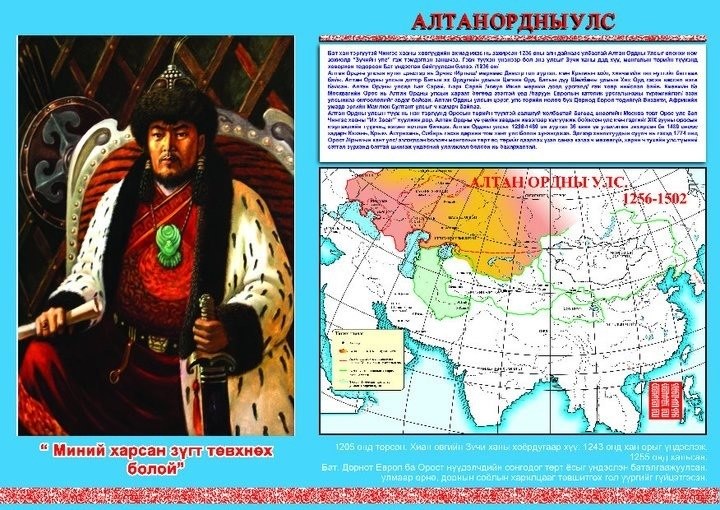 Batu Khan, the Khan of Golden Horde, Tsar of all Rus'. He was a son of Jochi and grandson of Genghis Khan. His empire was the chief state of the Golden Horde, which ruled Rus, Volga Bulgaria, Cumania, and the Caucasus for around 250 years, after also destroying the armies of Poland and Hungary. 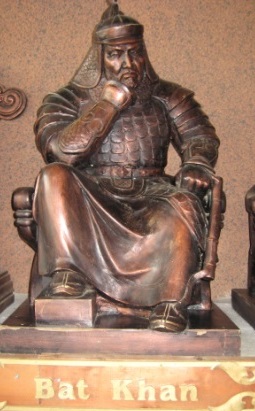
In 1252, Alexander Nevsky met with Sartaq at Sarai. Alexander received yarlyk (license) to become Grand Duke of Vladimir in vassalage to the Kipchak Khanate, he became Sartaq's anda (sworn brother, probably akin to blood brother) and an adopted son of Batu Khan. 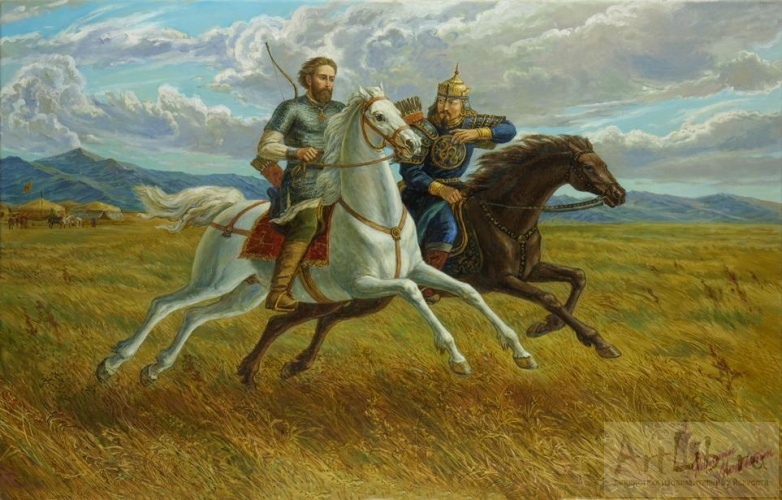 Alexander Nevsky in Golden Horde.  Mamai, of Borjigin descent, was a powerful military commander of the Blue Horde in the 1370s. The Horde controlled the lands in what is now the southern Ukrainian steppes and the Crimean peninsula.  Ivan the Terrible, his mother Elena Glinskaya was a descendant of Mamai.  Simeon Bekbulatovich (original name: Sain-Burat), Grand Prince of All Rus'(1575–1576), direct descendant of Batu Khan. Simeon married Anastasia Mstislavskaya, the great great granddaughter of Ivan III.  Tsar of all Rus' Boris Godunov, was a Mongol/Tatar.  Moreden Russia is the successor of the Mongol Horde, the Mongols gave the Russians a postal system, the census, more complex military hierarchies and most of the region that is today Russia was divided amongst the various hordes. In the court of Vasily II of Moscow, the Tatar language was spoken and many boyars adopted Turkic names and customs. With all this naturally came diplomatic marriages. The Russian word "dengi" for money came from the Mongols, and when they define your money, you know it's serious business. That's not to account for all the undocumented siring during raids. You can also see a lot of the Mongol influence in the language... Russian words featuring the sound 'X' (usually transcribed as 'kh' in English), are commonly of Mongol origin, including some of the most pungent Russian swear-words. George Vernadsky, a historian who has investigated Rus' and Russia in more scholarly depth than any of the other Eurasianists, speaks of the "melting pot of Russian civilization with its heterogeneous ethnic elements." Vernadsky comments that it is "both paradoxical and typical" that "the 'Westernizer' Chaadaev was of Mongol extraction and 'Slavophile' Aksakov family was of Varangian ancestry" (the names themselves are both of Mongol/Tatar origin). Andreas Kappeler's more recent survey of the history of the multinational Russian Empire emphasizes the Mongol/Tatar origins of many "Russian" gentry in the 18th century. Mere enumeration of some well-known Russian names of Mongol/Tatar linguistic origin should give pause: Arakcheev, Artsybashev, Bakhmet'ev, Berdiaev, Karamzin, Kochubei, Muratov, Musin, Nazarov, Saltykov, Tiutchev, Shakhmatov, Sheremet'ev, and others. The historical fact of interbreeding between Rusians/Russians and Mongols/Tatars is a particularly sore spot for some. Russians lament their past relations with this imprecisely defined alien class when they speak of the Mongol-Tatar yoke ("mongolo-tatarskoe igo"). Georgii Fedotov goes so far as to speak of a "Tatar Rus'" ("Tatarskaia Rus'"), and asserts: "Not from without, but from within the Tatar element took possession of the soul of Rus', penetrated its flesh and blood." Russian thinkers sometimes blame the "uncivilized" character features of their own ethnos on the Mongol-Tatars, as when Vladimir Kantor speaks of the "internal Steppe" within Russians and the "steppe element in the Russian" - especially within the Bolshevik Russian - which resulted from "imitation of the Mongol system of rule." Ever since the "secondary barbarization" of Russia under the Mongol-Tatars, according to Kantor, Russians have been seeking a way out of this "most difficult situation of a non-historical and countercivilized conduct of life." |
Posted By: lionmaster
Date Posted: 09-Dec-2013 at 10:43
|
The Barlas were a Mongol nomadic confederation in Central Asia. Its most famous representatives were the Timurids, a dynasty founded by the conqueror Timur (Tamerlane) in the 14th century, who ruled over modern-day Iran, Afghanistan, much of Central Asia, as well as parts of contemporary Pakistan, India, Mesopotamia, Anatolia and the Caucasus. According to the "Secret History of the Mongols", written during the reign of Ögedei Khan, the Barlas shared ancestry with the Borjigin (Genghis Khan's Clan), the imperial clan of Genghis Khan and his successors, and other Mongol clans. The leading clan of the Barlas traced its origin to Qarchar Barlas, head of one of Chagatai's regiments. Qarchar Barlas was a descendant of the legendary Mongol warlord Bodonchir, who was also considered a direct ancestor of Genghis Khan. Timurids and Mughals The 14th century conqueror Timur, the eponymous founder of the Timurid dynasty, was born into a noble family of the Barlas clan. One of his descendants, Zahir ud-Din Babur, later founded the Mughal Empire of Central Asia and South Asia. At the height of their power in the late 17th and early 18th centuries, they controlled much of the Indian subcontinent, extending from Bengal in the east to Kabul & Sindh in the west, Kashmir in the north to the Kaveri basin in the south. The name Mughal is derived from the original homelands of the Timurids, the Central Asian steppes once conquered by Genghis Khan and hence known as Moghulistan, "Land of Mongols". 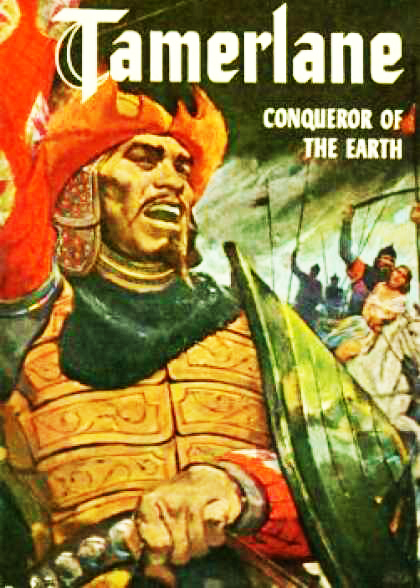 The House of Giray, were the Genghisid dynasty that reigned in the Khanate of Crimea from its formation in 1427 until its downfall in 1783. The dynasty also supplied several khans of Kazan and Astrakhan between 1521 and 1550. Apart from the royal Girays, there was also a lateral branch, the Choban Girays. Before reaching the age of majority, young Girays were brought up in one of the Circassian tribes, where they were instructed in the arts of war. The Giray khans were elected by other Crimean Tatar dynasts, called myrzas (mırzalar). They also elected an heir apparent, called the qalgha sultan (qalğa sultan). In later centuries, the Ottoman Sultan obtained the right of installing and deposing the khans at his will. The Girays were regarded as the second family of the Ottoman Empire after the House of Ottoman: "If Rome and Byzantium represented two of the three international traditions of imperial legitimacy, the blood of Genghis Khan was the third... If ever the Ottomans became extinct, it was understood that the Genghisid Girays would succeed them" (Sebag Montefiore. Prince of Princes: The Life of Potemkin. London, 2000).  |
Posted By: lionmaster
Date Posted: 09-Dec-2013 at 11:43
|
a Mongolian folk song [TUBE]dC7kw3imNiY[/TUBE]
|
Posted By: lionmaster
Date Posted: 09-Dec-2013 at 11:57
|
the art of war: medieval Mongol-Tatar armor & weapons         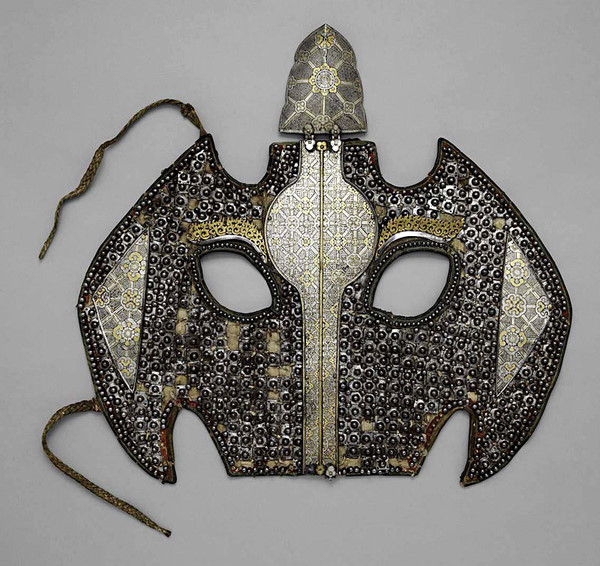  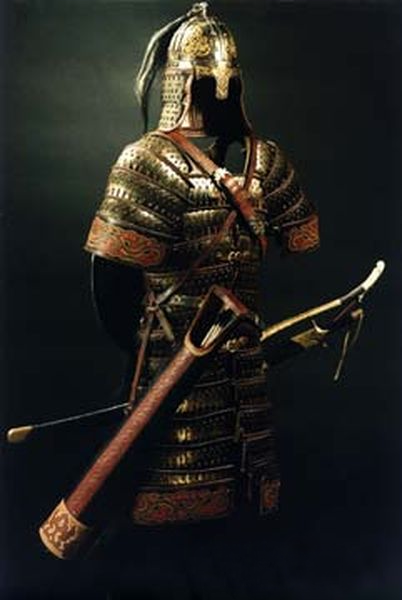    the Devil's horsemen    |
Posted By: lionmaster
Date Posted: 09-Dec-2013 at 12:35
|
Based on Francis Fukuyama, the Russian government strucuture is based on the traditional Mongol predatory techniques. Russia never had democracy. Stalin applied same government principles as the Mongols. And Putin is a 21st century Mongol, nothing else. Now, because Russia is also a rich country, the Mongol in realises that in order for him to get legitimacy and love of his subjects, he is willing to trade this legitimacy against some distribution of wealth, that is why there are so low taxes and no significant debts to speak about.Therefore, the current Russian protest movement, while we have to applaud and encourage it, will never be able to beat the Mongol system. The Effects of the Mongol Empire on Russia Introduction The history of Russia has always been a relatively sad and tumultuous one wrought with wars, power struggles, and abrupt changes. These changes have often been forcibly thrust wholesale upon Russia, rather than evolving through gradual, measured methods as in most peoples’ histories. From an earlier time, in which we know Russia as ‘Kievan Rus,’ the princes of the various cities (such as Vladimir, Pskov, Suzdal, and Kiev) constantly battled and bickered for power and control of the small semi-united state. Under the reigns of St. Vladimir (980-1015) and Yaroslav the Wise (1015-1054), the Kievan state was at its highest point and attained relative peace in contrast with years past. However, as history went, once the reigning rulers died, a power struggle ensued and wars once again flared. It was perhaps the decision of Yaroslav the Wise before his death in 1054 to assign princedoms to his sons that set the future of Kievan Russia for the next two hundred years. Following this decision, civil wars between the various sons ravaged much of the Kievan confederation, draining it of essential resources it would later need. As the princes incessantly fought with each other, the confederation of cities known as the Kievan state slowly decayed, declined, and lost its former glory. Further weakened by the incursions of steppe tribes such as the Polovtsy (aka Cumans/Kumans or Kipchaks) and previously by the Pechenegs, eventually the Kievan state was ripe for a takeover by more powerful invaders from distant lands. Yet before this, the Rus had a chance to change their fate. It was around 1219 when the Mongols first entered the areas nearest Kievan Russia in a move against the Polovtsy, who, in turn, asked for the assistance of the Rus princes. A council of princes convened in Kiev to consider the request, an act which worried the Mongols. According to historical sources, the Mongols declared that they had not attacked the cities or people of the Rus nor attacked their lands. The Mongol envoys requested peace of the Russian princes. Yet the princes did not trust the Mongols, suspecting that the Mongol advance would continue into Rus. Subsequently, the Mongol emissaries were promptly killed and any chance for peace was destroyed at the hands of the princes of the fractured Kievan state. Within twenty years, Batu Khan marched from Mongolia with an army of 200,000 men. One by one, Russian principalities such as Ryazan, Moscow, Vladimir, Suzdal, and Rostov fell to the Batu and his armies. The armies looted and razed the cities, slaughtered the people, and took many as prisoners and slaves. The Mongols eventually captured, sacked, and destroyed Kiev, the symbolic center of Kievan Russia. Only outlying northwesterly principalities such as Novgorod, Pskov, and Smolensk survived the onslaught, though these cities would endure indirect subjugation and become tributaries of the Golden Horde. Perhaps a decision by the Russian princes to make peace could have averted this. However, that was not the case and for their miscalculations, Russia would be forever changed in terms of its religion, art, language, government, and political geography. The Orthodox Church With the initial Mongol onslaught, many churches and monasteries were looted and destroyed while countless adherents to the church and scores of clergy were killed; those who survived often were taken prisoner and enslaved (Dmytryshyn, 121). The mere shock of the force and size of the Mongol army was devastating. The distress was just as political and economic in nature as it was social and spiritual. The Mongol forces claimed that they were sent by God, and the Russians believed that the Mongols were indeed sent by God as a punishment for their sins. The Orthodox Church would become a powerful beacon during the “darker” years of the Mongol subjugation. The Russian people would eventually turn inward, seeking solace in their faith and looking to the Orthodox Church for guidance and support. The shock of being conquered by this steppe people would plant the seeds of Russian monasticism, which would in turn play a major role in the conversion of such people as the Finno-Ugrian tribes and the Zyrianians (now known as the Komi), as well as the colonization of the northern regions of Russia (Vernadsky, 379). The humiliation suffered by the princes and the town assemblies caused fragmentation of their political authority. This loss of political unity allowed the Church to rise as an embodiment of both religious and national identity while filling the gap of lost political identity (Riasanovsky, 57). The unique legal concept of iarlyk (pronounced ‘yarlīgh’), or charter of immunity, also contributed to the strengthening of the Church. With the reign of M?nke-Temür, a iarlyk was issued to Metropolitan Kirill for the Orthodox Church in 1267. While the church had been under the de facto protection of the Mongols ten years earlier (from the 1257 census conducted under Khan Berke), this iarlyk formally decreed protection for the Orthodox Church. More importantly, it officially exempted the church from any form of taxation by Mongol or Russian authorities (Ostrowski, 19). And permitted that clergymen not be registered during censuses and that they were furthermore not liable for forced labor or military service (Hosking, 57). As expected, the result of the iarlyk issued to the Orthodox Church was profound. For the first time, the church would become less dependent on princely powers than in any other period of Russian history. The Orthodox Church was able to acquire and consolidate land at a considerable rate, one that would put the church in an extremely powerful position in the centuries following the Mongol takeover. The charter of immunity strictly forbade both Mongol and Russian tax agents from seizing church lands or demanding any services from the Orthodox Church. This was enforced by a simple penalty – death (Vernadsky, 377). Another prominent reason the church developed so quickly laid in its mission – to spread Christianity and convert those still practicing paganism in the countryside. To strengthen the internal structure of the Orthodox Church, metropolitans traveled extensively throughout the land to alleviate administrative deficiencies and to oversee the activities of the bishops and priests. Moreover, the relative security (economic, military, and spiritual) surrounding hermitages lured peasants from the countryside. As this heightened urban development within the periphery of church properties destroyed the peaceful atmosphere the hermitage was originally established to give, members of the monastery would move further out into the wilderness to establish a new hermitage, beginning the process anew. This system of founding religious settlements continued for some time and contributed to the augmentation of the Orthodox Church (Vernadsky, 377-8). One last significant change that occurred was the location of the center of the Orthodox Church. Before the Mongols invaded Russian lands, Kiev was the ecclesiastical center. Following the destruction of Kiev, the Holy See moved to Vladimir in 1299, and eventually to Moscow in 1322 (Hosking, 72), helping to bolster the importance of Moscow significantly. Art While the arts in Russia first suffered mass deportations of its artists, the monastic revival and the focus of attention that turned toward the Orthodox Church led to an artistic revival. What defined the Russians – at this crucial moment when they were without a state – was their Christianity and ability to express their devout beliefs. During this Time of Troubles, such great artists as Theophanes the Greek and Rublev came into play (Figes, 299-300). It was during the second half of the Mongol rule in the mid-fourteenth century that Russian iconography and fresco painting began once again to flourish. Theophanes the Greek arrived in the late 1300s. He decorated and worked on various churches throughout the land, especially in Novgorod and Nizhniy Novgorod. In Moscow, he painted the iconostasis for the Church of the Annunciation as well as worked on the Church of the Archangel Michael (Martin, 233). A few decades after Theophanes’ arrival, Rublev would become one of his most aspiring and important students. Iconography came to Russia from Byzantium in the tenth century, but the Mongol invasion in the thirteenth century cut Russia off from Byzantium. Language While the linguistic effects may seem at first trivial, such impacts on language help us to determine and understand to what extent one empire had on another people or group of people – in terms of administration, military, trade – as well as to what geographical extent the impact included. Indeed, the linguistic and even socio-linguistic impacts were great, as the Russians borrowed thousands of words, phrases, other significant linguistic features from the Mongol and the Turkic languages that were united under the Mongol Empire (Dmytryshyn, 123). Listed below are a few examples of some that are still in use. All came from various parts of the Horde. амбар ambar barn базар bazar bazaar деньги den’gi money лошадь loshad‘ horse сундук sunduk truck, chest таможня tamozhnya customs One highly important colloquial feature of the Russian language of Turkic origin is the use of the word давай which expresses the idea of ‘Let’s…’ or ‘Come on, let’s...’ (Figes, 370-1). Listed below are a few common examples still found commonly in Russian. Давай чай попьем. Davai chai popem. ‘Let’s drink some tea.’ Давай выпьем! Davai vypem! ‘Come on, let’s get drunk!’ Давай пойдём! Davai poidyom! ‘Come on, let’s go!’ In addition, there are dozens of place names of Tatar/Turkic origin in southern Russia and the lands of the Volga River that stand out on maps of these areas. City names such as Penza, Alatyr, and Kazan’ and names of regions such as Chuvashia and Bashkortostan are examples. Administration and Institutions Images of totalitarianism spring to mind when one at first ponders that which is Russia: from the current times of Vladimir Putin’s presidency, to when the Soviet Union was still a nation, and even before to Imperial Russia. However, in Kievan Rus, a form of democracy did exist. Comprised of all free male citizens, the veche (вече) was a town assembly that met to discuss such matters as war and peace, law, and invitation or expulsion of princes to the veche’s respective town; all cities in Kievan Russia had a veche. It was essentially a forum for civic affairs to discuss and resolve problems. However, this democratic institution suffered severe curtailment under the Mongols. By far the most influential of the assemblies were in Novgorod and Kiev. In Novgorod, a special veche bell (in other towns, church bells were ordinary used for this purpose) was created for calling the townspeople together for an assembly, and in theory, anyone could ring it. In the times after the Mongols had conquered the majority of Kievan Russia, veches ceased to exist in all cities except Novgorod, Pskov, and others in the northwestern regions. Veches in those cities continued to function and develop until Moscow itself subjugated them in the late fifteenth century. However, today the spirit of the veche as a public forum has been revived in several cities across Russia, including especially Novgorod. Of great importance to the Mongol overlords was census tabulation, which allowed for the collection of taxes. To support censuses, the Mongols imposed a special dual system of regional administration headed by military governors, the basqaqi (баскаки), and/or civilian governors, the darugi (даругы). Essentially, the basqaqi were given the responsibility of directing the activities of rulers in the areas that were resistant or had challenged Mongol authority. The darugi were civilian governors that oversaw those regions of the empire that had submitted without a fight or that were considered already pacified to Mongol forces (Ostrowski, 273). However, the offices of the basqaqi and the darugi, while occasionally overlapping in authority and purpose did not necessarily always rule at the same time. As we know from history, the ruling princes of Kievan Russia did not trust the Mongolian ambassadors that came to discuss peace with them in the early 1200s; the princes regrettably put the ambassadors of Genghis Khan to the sword and before long paid dearly. Thus, in the thirteenth century the basqaqi were stationed in the conquered lands to subjugate the people and authorize even the day-to-day activities of the princes. Furthermore, in addition to ensuring the the census, the basqaqi oversaw conscription of the local populace (Martin, 150). Existing sources and research indicates that the basqaqi had largely disappeared from the Rus’ lands by the mid-fourteenth century, as the Rus more or less accepted the Mongol overlords. As the basqaqi left, the darugi replaced them in power. However, unlike the basqaqi, the darugi were not based in the confines of the lands of the Rus; in fact, they were stationed in Sarai, the old capital of the Golden Horde located not far from present-day Volgograd. The darugi functioned mainly as experts on the lands of the Rus’ and advised the khan accordingly. While the responsibility of collecting and delivering tribute and conscripts had belonged to the basqaqi, with the transition from the basqaqi to the darugi these duties we actually transferred to the princes themselves when the khan saw that the princes could complete such tasks (Martin, 151). The first census taken by the Mongols occurred in 1257, just seventeen years after their conquest of Rus’ lands. The population was divided into multiples of ten, a system that had been employed by the Mongols who extended its use over the entirety of their empire; the census served as the primary purpose for conscription as well as for taxation. This practice was carried on by Moscow after it stopped acknowledging the Horde in 1480. The practice fascinated foreign visitors to Russia, to whom large-scale censuses were still unknown. One such visitor, Sigismund von Herberstein from Hapsburg made note of the fact that every two or three years, the prince conducted a census throughout the land (Wittfogel, 638). Census taking would not become widespread in Europe until the early 19th century. One significant observation that we must make is that the extent to which the Russians so thoroughly conducted the census was not achieved elsewhere in Europe for another 120 years or so, during the Age of Absolutism. The impact of the Mongol Empire at least in this area was obviously deep and effective and helped to create a strong central government for Russia. One important institution that the basqaqi oversaw and maintained was the yam (a system of posts), which was constructed to provide food, bedding, horses, and either coaches or sleds, according to the season (Hosking, 89). At first constructed by the Mongols, the yam allowed relatively rapid movement of important communiqués between the khans and their local leaders, as well as a method of quickly dispatching envoys, local or foreign, between the various principalities across the vast the empire. Each post had horses ready for use by authorized persons as well as to replace tired horses for especially long journeys. Each post was usually located about a day’s ride from the nearest post. The local people were obliged to maintain the posts, to feed the horses, and to meet the needs of emissaries traveling through their posts. The system was quite efficient. Another report by emissary Sigismund von Herberstein of the Hapsburgs stated that the yam system allowed him to travel 500 kilometers (from Novgorod to Moscow) within 72 hours – much faster than anywhere in Europe (Wittfogel, 639-40). The yam system helped the Mongols to maintain tight control over their empire. During the twilight years of the Mongol’s hold on Russia in the late fifteenth century, Prince Ivan III decided to continue the use of the idea of the system of the yam in order to keep an established system of communication and intelligence. However, the idea of a postal system as we know it today would not come into existence until after the death of Peter the Great in the early 1700s. Some such institutions brought to Russia by the Mongols transformed to meet Russian needs over time and lasted for many centuries after the Golden Horde. These greatly augmented the development and expansion of the intricate bureaucracy of the later, imperial Russia.  |
Posted By: Bushido
Date Posted: 09-Dec-2013 at 12:44
|
Good chunk of eastern Slavic folks, particulary Russians, and some Ukrainians have Mongols/Turks in their ancestry. Probably it's something folks don't advertise as Mongols/Turks are not depicted favorably among Europeans for obvious historical and political reasons, and perhaps some others. Lenin's original surname "Ulyanov" comes from a Mongolian clan name "Ulyankhai"(also known as "Uriankhai") means "Realm of Mountain Warriors" in old Mongol/Turk language. Ulyanov the end "OV" is a typical end for Russian name is added on Ulyankhai. Most Russian names end with "OV" or "N". Lenin's both grandparents were Mongolian, his grandmother on his father's side was a Kalmyk Mongol woman named Anna Smirnova. According to Volkogonov, Lenin was German-Jewish-Kalmyk-Russian by ancestry, though the Kalmyk(Mongol) element in his blood seemed to dominate his physical appearance.  Field Marshal Mikhail Kutuzov, Mongol/Tatar  Shoqan Valikhanov, a Genghisid of the Jochi lineage, born in Kazakhstan.  notable Badmaev  Marshal of the Soviet Union Semyon Budyonny.  Semyon Timoshenko, People's Commissar for Defense of the Soviet Union, born in Ukraine  Oka Ivanovich, Kalmyk Mongolian, Soviet military leader, colonel general.  Basan Gorodovikov, Kalmyk Mongolian, Soviet General, defeated German force in 1944.  Leonid Brezhnev, General Secretary of the Central Committee of the Communist Party of the Soviet Union.  Sergei Shoigu, Minister of Defence of Russia, he is also from Ulyankhai clan as Lenin.  Yuriy Yekhanurov, Buryat Mongolian, Minister of Defense of Ukraine.  As Allied troops entered and occupied German territory during the later stages of World War II, mass rapes took place, both in connection with combat operations and during the subsequent occupation that was to last many years. Most published and most numerous are the rapes committed by Soviet servicemen, for which estimates range from hundreds of thousands to two million. With respect to the number of abortions reported in Berlin, and the estimates of number of rapes based on the abortions statistics, there are some alternative explanations, that don't necessarily involve rapes by Soviet soldiers. Atina Grossman in her article in "October"(JSTOR: October, Spring, 1995, pp. 42–63) describes how until early 1945 the abortions in Germany were illegal (except for medical and eugenic reasons), and so when doctors opened up and started performing abortions to rape victims (for which only an affidavit was requested from a woman), many women would claim they were raped but their accounts were surprisingly uniform (describing rapists as having "mongoloid type"). It was also typical that women specified their reasons for abortions being mostly socio-economic (inability to raise another child) rather than moral or ethical.  Russian alcoholism and the "Mongoloid gene" SCIENTISTS researching cures for alcoholism and hangovers say that they have found a genetic link between Russians’ traditional weakness for drink and the marauding Mongol armies. As many as 50 per cent of Muscovites are estimated to have inherited Mongol genes that make them absorb more alcohol into the bloodstream and break it down at a slower rate than most Europeans, they say. That means that they get more drunk and have worse hangovers, and are more likely to become addicted to alcohol, given Russia’s taste for vodka, its harsh climate and the social and economic chaos after the collapse of the Soviet Union. “The difference is huge — in reaction speed, memory, hand tremor — and in how they recover,” Vladimir Nuzhny, of the Health Ministry’s National Narcology Research Centre, said. “On average, 50 per cent of people in Moscow have this Mongoloid gene. So this, we think, is part of the problem.” As part of the study, the scientists paid 12 volunteer students to drink 350 grams, about a third of a bottle, of vodka in an hour, and then monitored their behaviour. “That’s a lot by Western standards, but it’s normal for Russia,” Dr Nuzhny told The Times. “At first they thought it was great, because they were being paid to drink, but after a while they realised it was more like work.” The intoxicated students had to perform a series of tests, including answering questionnaires and playing rally-driving computer games, and they were breathalysed at regular intervals. The scientists even measured their ability to stand up straight. After sleeping off the effects in a dormitory at the laboratory — which had a karaoke machine — the students were given a slap-up breakfast before doing more tests to measure their hangovers. The study showed that those with the Mongol genes absorbed 50 per cent more alcohol into the bloodstream at peak levels and metabolised it much more slowly than the other students. “The way they get drunk is completely different. They are also more likely to feel aggressive or depressed,” Dr Nuzhny said. “They do not necessarily look Mongolian, but the gene that governs how they metabolise alcohol is Mongoloid.” The Mongols swept across Asia and Russia and into Europe in the 13th century and ruled Russia for two centuries. Inter-marriage with the Slavs and other ethnic groups was common. Scientists have long known that people of Mongol extraction, including Chinese, Koreans and Japanese, have an enzyme for metabolising alcohol that is different from that of Caucasian Europeans. Dr Nuzhny claims that his study is the first to look at the effect of alcohol on Russians who have inherited Mongol genes. He says that the phenomenon can be explained partly by evolution. The nomadic Mongols, whose only indigenous form of alcohol was fermented mare’s milk, evolved with a different enzyme from the settled Europeans, with their long tradition of producing stronger grape and grain-based alcohol. Dr Nuzhny’s research is partly funded by pharmaceutical companies trying to develop drugs to cure hangovers and alcoholism. Russians drink about 15 litres of pure alcohol a head each year, one of the highest rates in the world, and by some estimates one in seven Russians are alcoholics. Alcohol is largely to blame for a fall in life expectancy to less than 59 since the fall of the Soviet Union. |
Posted By: lionmaster
Date Posted: 09-Dec-2013 at 13:10
|
The Mongolian rule had a very direct impact on the states of Russia and China. The Mongols impacted them both politically and economically. In China and Russia, the Mongol era brought a great change in political power. The Khans, or “Great Leaders” ruled both places and destroyed cities and killed government officials. This was not just an example of the Mongols ruthlessness but it was a form of tactics that brought fear into the opposing people so they would never revolt. Also, in China, the Mongols moved the capital of China to Beijing so that would become the center of commerce. In Russia, the Mongols moved the capital of China to Moscow, created a form of government by making a relationship between politics and the Orthodox Church, putting political power in the church as the Russian state starts to split. Not only did the Mongol rule have a huge effect on the politics of China and Russia but the economy was affected as well. During the Mongolian rule, the China became a center of trade for the Eastern world. The Mongols controlled and thus protected the people of the Silk Route, allowing easy access to China. The Chinese were trading precious things such as porcelain and silks so people would flood into China trying to get these things. While China was succeeding in their wealth, Russia was struggling to grow economically. They actually basically started over with agriculture because the Mongols wiped them out so bad. Though it was hurt badly, Russia’s trade routes helped them recover their economy over time. Also, the Mongols deprived both of these countries of precious metals and jewels. Overall, the Mongolians left their mark on the economies of both Russia and China. Though the Mongolian Empire fell long ago, the traditions and influences it had on the states it conquered still show today.  Dai Ön Yeke Mongghul Uls (Yuan Dynasty) was the empire established by Kublai Khan. "Dai Ön Yeke Mongghul Uls" literally means "the Vast Mongol Dynasty", later was translated in Chinese as "Yuan (大元)". For centuries before Kublai conquest of northern China, the nomads had threatened China from the north. Even longer than the threat from the north, Chinese rulers thought of their land – the land of Chinese-speaking peoples scattered throughout several kingdoms – as “all under Heaven.” In the Confucian world-view, a wise ruler would be able to unite all under heaven – all the world that mattered – and from this notion came the idea of China as the middle kingdom, zhongguo, which is also the modern Chinese name for the country. The Mongol invasion caused much of the court to flee to the south, along the Yangzi River. The old courtly language left its mark on modern Cantonese. Mandarin is the northern court language, heavily influenced by Mongolian, a Turkic language. Yet during the Mongol interregnum, ethnic Chinese were employed in government to help ensure stability and a continuation of the strengths that made the Middle Kingdom such an attractive target of the conquerors. (The Mongols did discriminate against ethnic Chinese by keeping most key posts in Mongol hands.) The Mongols influenced northern court and common culture, but not by displacing China’s native culture. They may have added a few minor elements, and left the bulk unchanged. For instance, the Mandarin accent is heavily influenced by Mongol, a Turkic language, but the underlying language is still Chinese, and the Mongols, being minimally literate themselves, did nothing to change the writing system. |
Posted By: lionmaster
Date Posted: 09-Dec-2013 at 14:07
|
Mongol VS. Chinese Ming Dynasty War History: Battle of Tumu was a frontier conflict between the Oirat Mongols and the Chinese Ming Dynasty which led to the capture of the Zhengtong Emperor(明英宗) in 1449, and the defeat of an army of 500,000 men by 30,000 Mongol horsemen. This battle was also the very early decline in the Ming Dynasty. 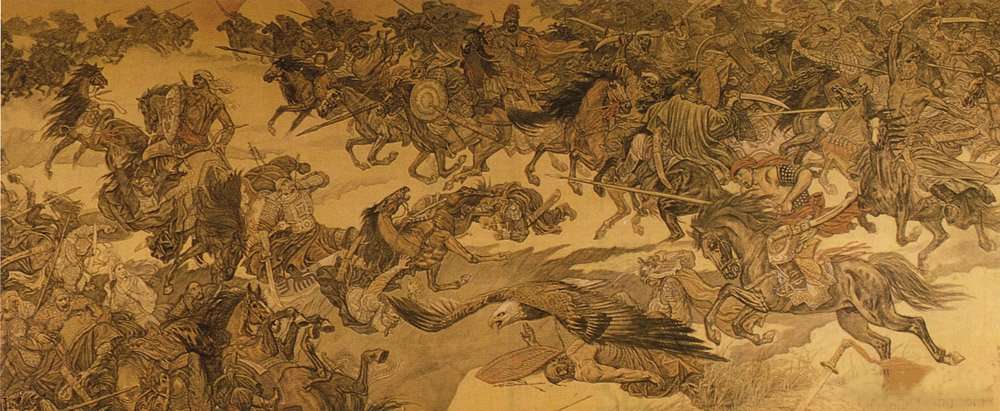 |
Posted By: lionmaster
Date Posted: 09-Dec-2013 at 20:09
|
In 1644, an Manchu- Mongol allied force entered from the northern border of China, they conquered China and had ruled China for 250 years. Manchu belongs with Turk/Mongol in a genetically related group known as the Altaic family of language. Manchus were also known as "Banner people(旗人)", "Tartars(鞑靼)", "red tasseled Mongols (红缨蒙古)", "the Mongols of wearing red tassels (戴红缨的蒙古人)" and "the Tartars of wearing red tassels (戴红缨的鞑子)." In 13th century, Genghis Khan led the Mongol troops to fight against Jurchens. The Jin dynasty could not withstand the Mongols' attack and was finally defeated by Ögedei Khan in 1234. Under the Mongols' control, the Jurchens were mainly divided into two groups and treated differently: the ones who were born and raised in North China and fluent in Chinese were considered to be Chinese; but the people who were born and raised in the Jurchen homeland (Manchuria) without Chinese-speaking abilities were treated as Mongols. From that time, the Jurchens increasingly merged with the Chinese, while those living in their homeland started to be Mongolized. They adopted Mongolian customs, names and the Mongolian language. In 1449, Mongol assaulted Ming Dynasty and captured Zhengtong Emperor in Tumu. Since then, more and more Jurchens started to find out Ming's declining power from Mongols' invasion, especially Zhengtong Emperor's capture which directly caused Jurchen gradually went out of control of Ming. At about this time, the Jurchen script was officially abandoned. More Jurchens adopted Mongolian as their writing language. Nurhaci started his ambition as a revenge of Ming's manslaughter of his grandfather and father in 1583. He established a military system called "Eight Banners" to organized Jurchen soldiers as "Bannermen" and ordered his scholar Erdeni and minister Gagai to create a new Jurchen script (later known as Manchu script) by referencing traditional Mongolian alphabet.In 1603, Nurhaci was recognized as "Sure Kundulen Khan" (wise and respected khan). The history of Manchu family names is quite long. After the Mongols extinguished the Jurchen empire, Manchus started to adopt Mongol culture, including their custom of using only their given name till the end of the Qing Empire. The last Khan Ligdan saw much of his power weakened in his quarrels with the other Mongol tribes and was defeated by the Manchus-Mongol alliance, he died soon afterwards. His son Ejei Khan gave Abakhai Khan (Aisin-gioro hala i Hong Taiji) the imperial authority, ending the Northern Yuan in 1635. The Khalkha Mongols joined alliance in 1691 when their defeat by the Oirat Mongols. In 1636 Abakhai Khan(Aisin-gioro hala i Hong Taiji) obtained the imperial seal of the Mongolian Yuan Empire, in the same year he changed the title of his empire from "Later-jin" to "Daicing"(literally means "warrior" in Mongolian language, later translated in Chinese as "Daiqing 代清", "Daqing 大清", or "Qing 清"). Qing Empire was the successor of the Yuan Empire. During the Qing, there was marriage alliances between Manchu and Mongols, 110 Manchu princesses were married to the Mongol nobility, and there were 40 princes of Qing were Mongolian. Intermarriages with Chinese were not permitted until the end of Qing Empire.  a standard armour of Yuan Empire (left) and a standard armour of Qing empire (right).   an government official of Mongolian Yuan Empire on the Meidaizhao frescoes. This style of official robe was later used by Manchurian Qing Empire.  Mongol horsemen were the elite force of the Qing army  Empress Dowager Xiaozhuang of the Qing Empire, was born of the Mongol Borjigit clan. She was the mother of Shunzhi Emperor, and the grandmother of Kangxi Emperor. She wielded significant influence in the Qing imperial court during the reigns of her son and especially, during that of her grandson. Known for her wisdom and political insight, Empress Xiaozhuang is a respected figure in the history of the Qing Empire.  Sengge Rinchen was an imperial prince and general of the late Qing Empire, he was the uncle of the Emperor Xianfeng. Sengge Rinchen was born of the Mongol Borjigit clan, which could trace its origins back to Genghis Khan's brother Hasar.  Minggatu, was born in Plain White Banner of the Qing Empire. He was of the Mongol Sharaid clan. He was the first person in China who calculated infinite series and obtained more than 10 formulae. On May 26, 2002, the minor planet 28242 was named after Minggatu as 28242 "Mingantu". 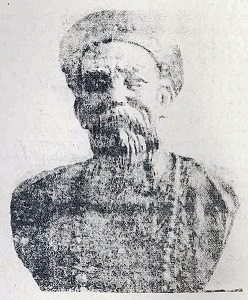 |
Posted By: lionmaster
Date Posted: 09-Dec-2013 at 20:58
|
Mongolian wrestling, known as Bökh is the folk wrestling style of Mongols. Bökh means "durability". It was a military sport intended to provide mainly strength, stamina and skills training to troops. Bokh is the most important of the Mongolian culture's historic "Three Manly Skills", that also include horsemanship and archery. Genghis Khan considered wrestling to be an important way to keep his army in good physical shape and combat ready. The court of Qing Empire (1646–1911) held regular wrestling events, mainly between ethnic Manchu and Mongol wrestlers. Russian Sambo also has its roots in Mongolian Wrestling. There are several different versions, Mongolian (in the country of Mongolia and in Tuva of Russia), Buryatian (in the Buryatia of Russia) and Southern Mongolian (in northern China). [TUBE]jIjMuUNyXUw[/TUBE] The art of Bökh appears on bronze plates discovered in the ruins of the Hunnu Empire (206 BC–220 AD). 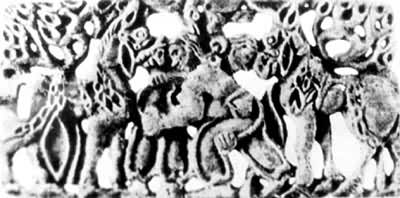 Since there are no weight classes in the Naadam of Mongolia, a small wrestler can compete against an opponent over twice his size. Smallest wrestlers usually weigh around 70 kg, while the biggest are over 200 kg, the median weight of a competitor at the Naadam is around 115 kg. Rank can only be attained during the Naadam festival. The number of rounds won by each wrestler determines rank. The lowest rank is the Falcon of Sum, given to the top four wrestlers at the soum level Naadam in any 329 sums of Mongolia. Highest rank is "Giant." The rank is held for life. Level Title Provision 1 Undefeatable Giant of Nation Win 5 times in Nation Naadam Wrestling 2 Wide Giant of Nation Win 4 times in Nation Naadam Wrestling 3 Ocean Giant of Nation Win 3 times in Nation Naadam Wrestling 4 Giant of Nation Win 2 times in Nation Naadam Wrestling 5 Lion of Nation Win in Nation Naadam Wrestling 6 Garuda of Nation Runner-Up in Nation Naadam Wrestling 7 Nation Elephant of Nation Semi-final in Nation Naadam Wrestling 8 Hawk of Nation Quarter final in Nation Naadam Wrestling 9 Falcon of Nation 1/8 final in Nation Naadam Wrestling 10 Lion of Aimag Win in Aimag Naadam Wrestling 11 Elephant of Aimag Runner-Up in Aimag Naadam Wrestling 12 Falcon of Aimag Semi-final in Aimag Naadam Wrestling 13 Elephant of Sum Win in Sum Naadam Wrestling 14 Falcon of Sum Semi-final in Sum Naadam Wrestling a notable Mongolian wrestler 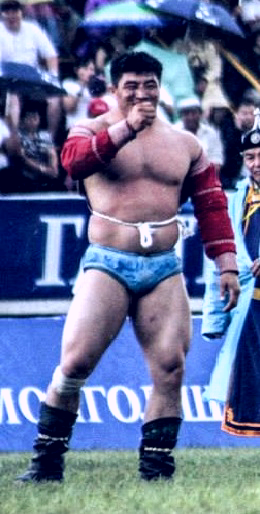 the Mongolian Titan 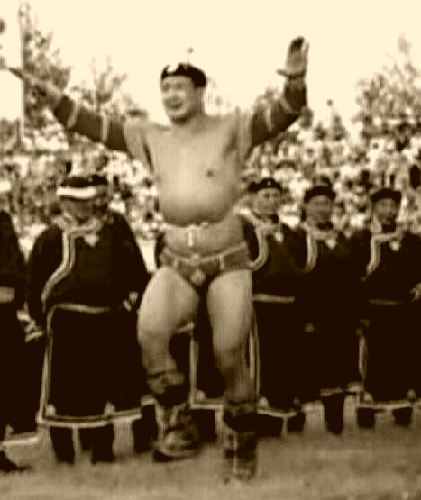 Naidangiin Tüvshinbayar, a "Hawk of Nation" wrestler, he won the gold medal in Men's Judo 100 kg Division at the Olympic Games 2008. 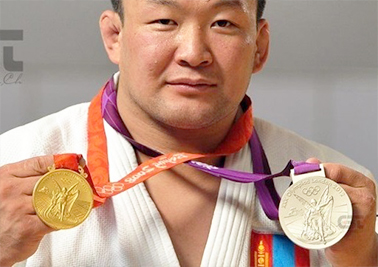 a "Wide Giant of Nation" wrestler  Khorloogiin Bayanmönkh, a "Undefeatable Giant of Nation" wrestler. He also won the champion in men's 100 kg at 1974 World Sambo Championships and Men's 100 kg Freestyle Wrestling at 1975 FILA Wrestling World Championships. He was awarded the title of "Merited Master of Sport of the USSR". 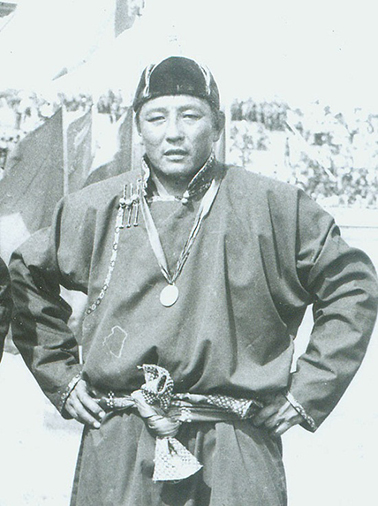 Mongolian wrestling competition at Red Square, Moscow  Manchu wrestling (buku) is an important martial art of the Qing Empire. Buku, meaning "wrestling" or "man of unusual strength" in Manchu, was originally from a Mongolian word, “bökh”. In the Yuan Empire, the Jurchens who lived in Manchuria adopted Mongolian culture including wrestling, bökh. In the early Qing period, rulers encouraged the populace, including aristocrats, to practise buku as a feature of military training. The Qing court established the "Shan Pu Battalion" and chose 200 fine wrestlers divided into three levels. Manchu wrestling moves can be found in today's Chinese wrestling, Shuai jiao, which is its most important part. Among many branches, Beijing wrestling adopted most Manchu wrestling moves. Manchu wrestlers competed in front of Qianlong Emperor 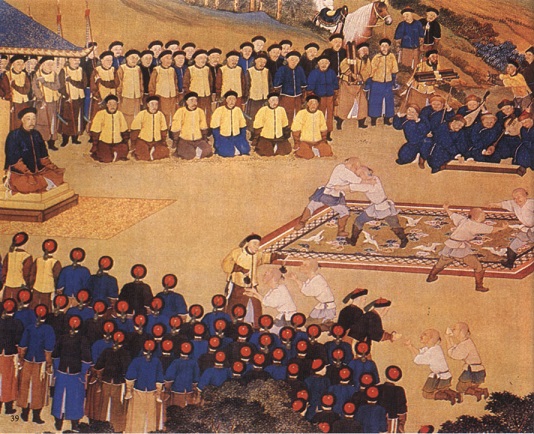 Bayan-Batu (白音巴图), an ethnic Mongol from northern China, he dominates the current Chinese traditional Wrestling (Shuaijiao), holds "the King of Kings" title in Shuaijiao.  |
Posted By: lionmaster
Date Posted: 09-Dec-2013 at 22:00
|
Ulaanhüü (乌兰夫), an ethnic Mongol, he was the Vice President of the People's Republic of China from 1983 to 1988.   Li Siguang (李四光), was the founder of China's geomechanics. He was a Mongol in China. One of the greatest scientists of China.  |
Posted By: lionmaster
Date Posted: 09-Dec-2013 at 22:32
|
Janybek Khan, a descendant of Genghis Khan, was a co-leader of a new Kazakh Khanate, following a successful rebellion against the Uzbek Khan Abu'l-Khayr Khan in 1465 and 1466. Janybek's father was Baraq (Khan of Golden Horde) who was poisoned by emirs of the former White Horde. He led the splinter group along with Kerei, who was his relative, and who was also descended from the famous Urus Khan of the White Horde. For his wisdom, he was given the title "Az", meaning "the wise" in the Kazakh language, and so was called Az-Zhanibek. His son, Kasym Khan codified the laws of his people. 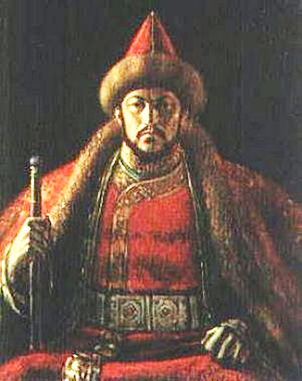 The Kazakh Khanate was founded in 1465 by Janybek Khan and Kerey Khan. During the reign of Kasym Khan (1511–1523). The name "Kazakhs" was began to use in the 15th century. There are many theories on the origin of the word Kazakh or Qazaq. Some speculate that it comes from the Turkic verb qaz (to wander), because the Kazakhs were wandering steppemen; or that it derives from the prototurkic word khasaq (a wheeled cart used by the Kazakhs to transport their yurts and belongings). Genghisid of the Jochi lineage dominates the imperial court of Kazakhstan  Öz Beg Khan, better known as Ozbeg or Uzbek (later "Uzbekstan" originated from his name), was the longest-reigning khan of the Golden Horde, he was the son of Toghrilcha and grandson of Mengu-Timur. Byzantine Emperor Andronikos III purportedly gave his illegitimate daughter in marriage to Öz Beg. 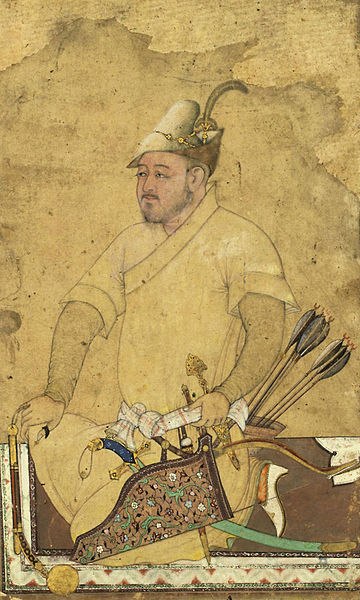 |
Posted By: lionmaster
Date Posted: 10-Dec-2013 at 00:13
 However, the newly established Republic of China considered Mongolia to be part of its own territory. The Mongolian government said to Yuan Shikai, the President of the Republic of China "We established own state before you, the Mongols and Chinese have different origin, our languages and scripts are different. You're not the Manchu or Mongol's descents, so how can you think China is the Manchu's successor?". In 1919, Chinese troops led by Xu Shuzheng occupied Mongolia. However, as a result of the Russian Civil War, the White Russian Lieutenant General Baron Ungern led his troops into Mongolia in October 1920, defeating the Chinese forces in Niislel Khüree (Ulaanbaatar) in early February 1921. In order to eliminate the threat posed by Ungern, Bolshevik Russia decided to support the establishment of a communist Mongolian government and army. This Mongolian army took the Mongolian part of Kyakhta from Chinese forces on March 18, 1921, and on July 6 Russian and Mongolian troops arrived in Khüree. These events led to Mongolia's close alignment with the Soviet Union over the next seven decades. |
Posted By: lionmaster
Date Posted: 10-Dec-2013 at 00:41
|
The Firm Hero Magsarjav  Khatanbaatar Magsarjav (1877 - 1927), was a Mongolian general and a leading figure in Mongolia's struggle for independence. His contingent of elite 800 Mongol soldiers fought White Russians and Chinese forces over 30 times between 1912 and 1921, without a single defeat. He is often noted by historians as one of the Mongol figures of which both Russians and Chinese were afraid. He was an minister of the army in the 1920s. He received the additional title "Ardyn Khatanbaatar Magsarjav (People's firm hero Magsarjav)" in 1924. In 1911, Magsarjav was assigned to Khovd as Mongol military aide to the Manchu amban stationed there. After Mongolia's declaration of independence, Magsarjav transmitted the new government's demand for the ambans' removal. After the amban's refusal, Magsarjav returned to Niislel Khüree to report on the situation. In May 1912, he and Damdinsüren were appointed commander of the army and was dispatched to liberate Khovd. On the night of 20 August 1912, Khovd has been taken by the Mongolian army about 2,500 in number. Dambijantsan, Magsarjav, the Bargut commander Damdinsüren and Khaisan have led the operation. Before that, relief Manchu force sent in from Shar süm/ Xinjiang had been annihilated. For their success at Khovd, Damdinsüren received the title "Manlaibaatar (forefront hero)", while Magsarjav received the title "Khatanbaatar". In the spring of 1913, Magsarjav commanded troops defending the southern border against Chinese incursions near Jingpeng and Dolon Nur in Inner Mongolia . He was later awarded the Autonomous Mongolian government's "Shar Joloo" medal. In the years that followed, Magsarjav fought against forces under the Bavuujav, who was continually raiding eastern Mongolia. He was later sent to Mongolia's western border. In 1918, Magsarjav was awarded his own banner, which had been carved out his native Itgemjit banner. From March 1921, Magsarjav served as commander-in-chief of all Mongolian troops under Ungern von Sternberg's puppet government. He assisted Baron Ungern in recruiting Mongolian soldiers and participated in the Baron's operation expelling remaining Chinese troops from Mongolia. In May 1921, Magsarjav left the capital ostensibly to mobilize troops in Uliastai and western provinces to confront the expected invasion of Mongolian partisans (commanded by Sükhbaatar) and Red Army units. However, in July 1921, Magsarjav joined the Russian Reds and Mongolian revolutionaries with his troops. Later that month, Magsarjav's troops unexpectedly encircled and killed Ungern's Buryats and Russian contingents stationed near Uliastai, their commanders ran but were killed later. At night to July 22, under the pretext of destroying Whites, Uliastai was seized, and a considerable part of Russian settlers and refugees was killed. Magsarjav continued to fight remnants of Ungern's troops and other White Russian forces in Western Mongolia until mid-1922, He was then appointed Minister of the Western Frontier, and in December 1922, he became Minister of the Army. He was one of the first to refuse his feudal rank. In 1923 anti-revolutionary resistance groups (made up mostly of troops formally under Ungern command), sought Magsarjav's assistance. Magsarjav instead organized their seizure by the Ministry of Inner Affairs. In 1924, Magsarjav officially joined the Mongolian People's Party. Later that year, he was sent to Moscow on official business. In 1925, he became a candidate member of the People's Party's central committee. In 1926, Magsarjav became seriously ill and died on September 3, 1927. He is buried in a ger-shaped mausoleum in Bulgan town. Across Mongolia Magsarjav mobilized about 800 to 2,000 soldiers. Out of these, 400 of them were an Elite Commando called Khalkhyn Tsereg, meaning 'Khalkha's soldiers'. The Khalkhyn Tsereg were Magsarjav's most trusted contingent and entirely consisted of ethnic Khalha Mongol soldiers, recruits from various regions of Mongolia. This elite commando troops played a major role in most of the miliatary victories of Mongol army over its enemies whether they would be Chinese, Red Russians or White Russian Guards. It is said that he personally recruited each of the individuals in the elite commando and thus knew everyone by their place of origin. Though the actual geographic distribution is not well known, it is often speculated them coming mostly from today's Zawkhan, Tuv, Khuwsgul, Bulgan, Ömnögovi, Khovd, Arkhangai and Uvs provinces of modern Mongolia. After each fight or gathering, he would order his troops to gather back at the specific time and location for the next campaign. All of his elite troops would always obey his orders. From 1912 to 1921 Khatanbaatar led his troops and fought White Russians and Chinese more than 30 times. He defeated Chinese troops many times, later managed by ruse some White Russians (including well-known general Bakich). Small groups of the Whites were destroyed. At the same time, Magsarjav with his detachment of 400 men very carefully pursued big White troops retreating from western Mongolia to Xinjiang: he waited for weapon from the Reds, as well as reinforcements. Majority of the contingents of White Russians in the western Mongolia were defeated with and without support of Soviet Red Army, majority were receded to Xinjiang. Khatanbaatar's fame of bravery and success were broadly publicized during the time of pro-communist rule in Mongolia, while negative sides of his activity were concealed. |
Posted By: lionmaster
Date Posted: 10-Dec-2013 at 00:47
  |
Posted By: lionmaster
Date Posted: 10-Dec-2013 at 05:52
|
Mongol Invasion of Japan (蒙古襲来) |
Posted By: lionmaster
Date Posted: 10-Dec-2013 at 21:36
|
1928 Soviet Movie "Storm Over Asia - Descendants of Chinggis Khaan" 2007 Russian movie "Mongols" [TUBE]gjaXpppWy0Y[/TUBE] 2010 Russian movie "By the Will of Genghis Khan" [TUBE]JeDIVeYYOxY[/TUBE] 2012 Russian movie "Golden Horde" [TUBE]Z7dd-T_nKWo[/TUBE]
|
Posted By: lionmaster
Date Posted: 10-Dec-2013 at 22:52
|
Jisun (or "jamah" in Persian) the traditional costume of Mongolian own meaning "one colour". It was only ever of a single colour and only ever to be worn on the occasion of an eponymous event, the jisun banquet. There were eleven grades of jisun robe, the highest being of nasji cloth, the second highest of velvet, the third of baoli– a textile with bands of woven or embroidered gold decoration, and the lowest of fengpi, which was probably a textile printed with gold. All these kinds of jisun robe, however, were to be accompanied by a hat decorated with gold dots.    |
Posted By: lionmaster
Date Posted: 10-Dec-2013 at 23:34
|
The morden Mongolian costume is named "deel", deel is an item of traditional clothing commonly worn since the Later Yuan period (Northern Yuan) among the Mongol/Turkic people, and can be made from cotton, silk, wool, or brocade. The deel is still commonly worn by both men and women outside major towns, especially by herders. In urban areas, deels are mostly only worn by elderly people, or on festive occasions. Deels typically reach to below the wearer's knees and fan out at the bottom and are commonly blue, olive, or burgundy, though there are deels in a variety of other colors.   |
Posted By: lionmaster
Date Posted: 11-Dec-2013 at 00:12
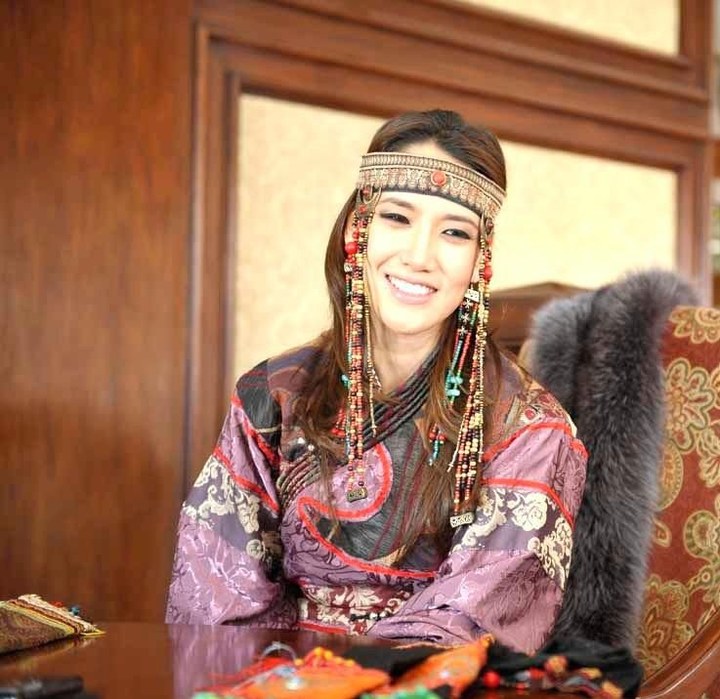      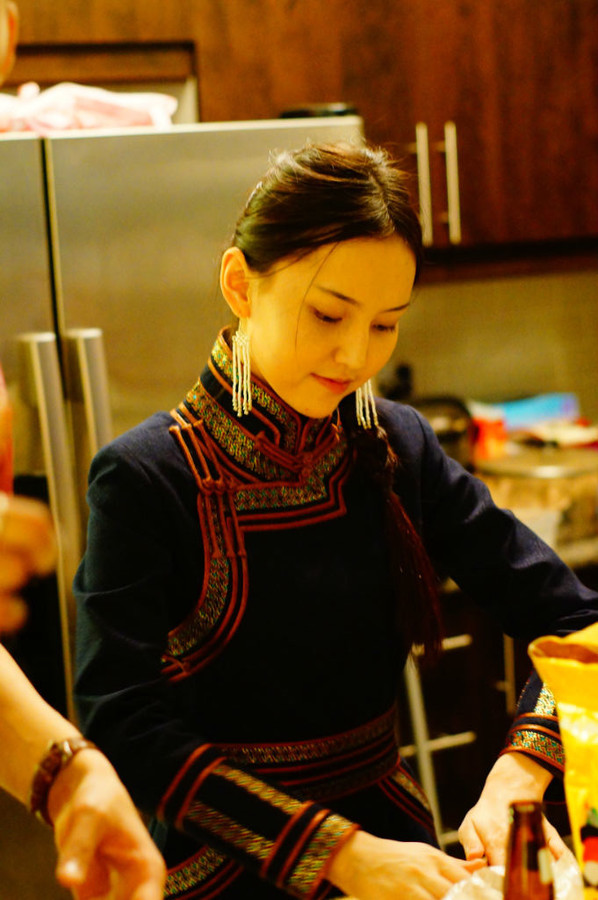      |
Posted By: lionmaster
Date Posted: 11-Dec-2013 at 00:28
       |
Posted By: lionmaster
Date Posted: 11-Dec-2013 at 00:41

     |
Posted By: lionmaster
Date Posted: 11-Dec-2013 at 00:55

   ' '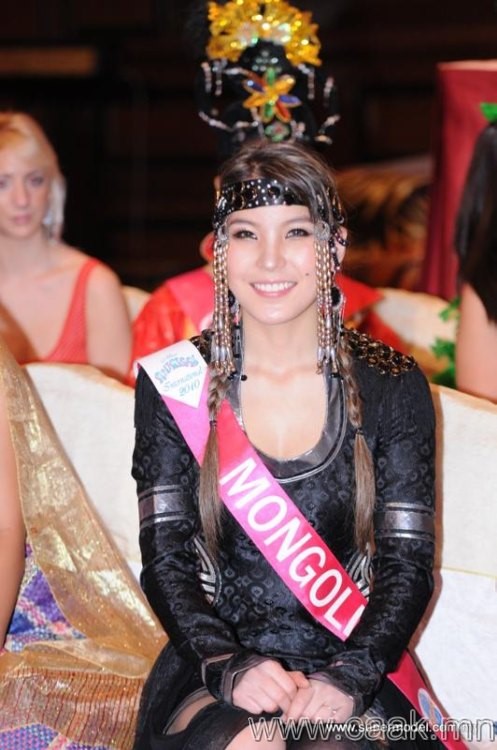   |
Posted By: lionmaster
Date Posted: 11-Dec-2013 at 03:21
|
In the Yuan Empire, the Jurchens who lived in Manchuria adopted Mongolian culture including costume. Later when the Manchu ruled China during the Qing Empire, certain social strata emerged. Among them were the Banners (旗), mostly Manchu, who as a group were called Banner People (旗人). Manchu women typically wore a one-piece dress that retrospectively came to be known as the qipao magua (旗袍 马褂, Manchu: sijigiyan or banner gown). The generic term for both the male and the female forms of Manchu dress, essentially similar garments, was chángpáo (长袍). the Manchu costume, Qipao magua (was heavily influenced by Mongolian deel)  Under the dynastic laws (the Queue Order, 剃发易服) after 1645, all Chinese were forced to wear a queue as did all Manchu men and dress in Manchurian qipao instead of traditional Chinese clothing, under penalty of death. Qing Empire forced all adult Chinese men to shave the front of their heads and comb the remaining hair into a queue, on pain of death. Until 1911, the changpao was required clothing for Chinese men of a certain class, but Chinese women continued to wear loose jacket and trousers, with an overskirt for formal occasions. The qipao was a new fashion item for Chinese women when they started wearing it around 1925. the original Chinese costume, Hanfu (汉服)  the former Chinese president Jiang Ze Min in Chinese traditional costume. (today's Chinese traditional costume has nothing similar with Hanfu, it was heavily influenced by the nomads after the Manchu conquest of China).  |
Posted By: lionmaster
Date Posted: 11-Dec-2013 at 19:40
|
Stalin in Mongolian deel    |
Posted By: lionmaster
Date Posted: 11-Dec-2013 at 19:55
|
The Mongols from Northern Caucasus Asud, were a guard and military group of Alani origin. The Mongol clan Asud is the plural of As, the Arabic name for the Alans. Their original religin was eastern Orthodox. After the Mongol invasion of Rus, many Alans submitted to the Mongol Empire. Some of them resisted the Golden Horde longer. Many warriors moved from Northern Caucasia to Mongolia. It is also claimed that they helped their new masters to fight against the Circassians and that they participated in the Mongol invasion of Europe. Under the rule of Möngke Khan, many were brought east to fight against the Chinese Song Dynasty and Nanchao in Yunnan in 1258-1259. The Alan imperial guard was divided into two corps with headquarters in Karakorum. After the coronation of Kublai Khan, those Alans participated in the campaign against Ariq Böke and later Qaidu under the Yuan Empire. Kublai Khan organized them into the Jasin guard (Alan guard) of 3,000 soldiers around 1271. The Alani guard reached its peak during the reign of Tugh Temür and their number expanded to 30,000. They remained influential in Mongolia until the 15th century, when the Oirat Mongols ruled Mongolia. During the 15-16th centuries, they formed part of the Yungshebiyu tumen in southern Mongolia. Today, there are few people with the clan name Asud in Aru Khorchin banner. The Soviet leader Joseph Stalin was a noble person of (Georgian born) Alani origin.  |
Posted By: lionmaster
Date Posted: 11-Dec-2013 at 21:59
|
Mongolia, from 1911 to 1980     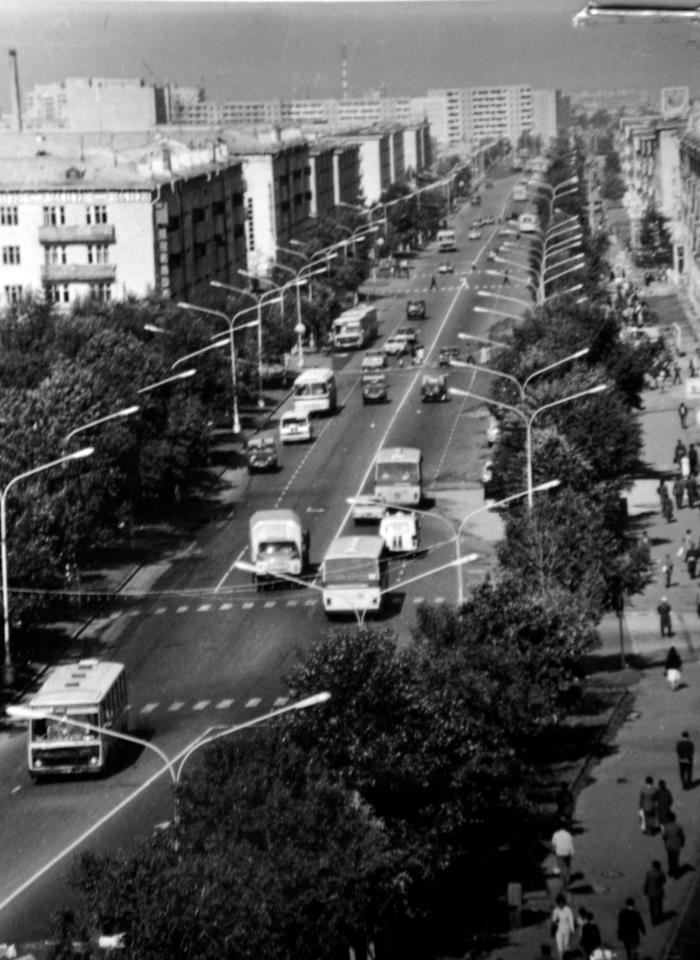                 |
Posted By: lionmaster
Date Posted: 11-Dec-2013 at 22:01
|
Mongolian cavalry charge during the Battle of Khalkhyn Gol, 1936. 
|
Posted By: lionmaster
Date Posted: 11-Dec-2013 at 22:05
|
Soviet communist leader Leonid Brezhnev and Mongolian communist leader Yumjaagiin Tsedenbal.  |
Posted By: lionmaster
Date Posted: 11-Dec-2013 at 22:13

       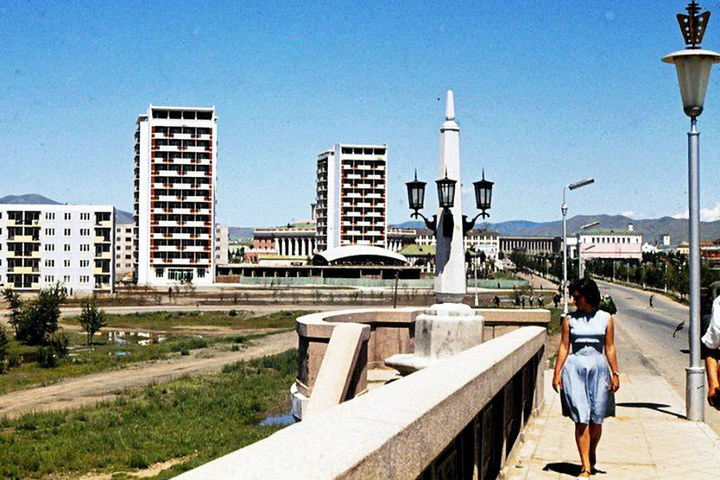     |
Posted By: lionmaster
Date Posted: 12-Dec-2013 at 15:51
           |
Posted By: lionmaster
Date Posted: 12-Dec-2013 at 16:00
      |
Posted By: lionmaster
Date Posted: 12-Dec-2013 at 16:07
      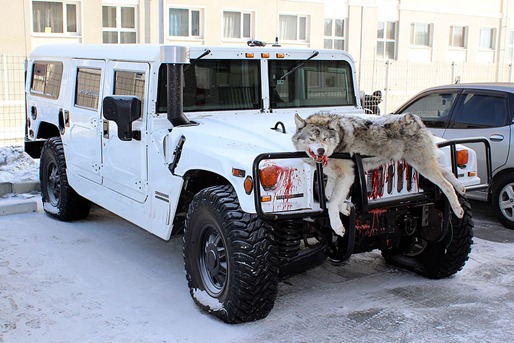     |
Posted By: lionmaster
Date Posted: 12-Dec-2013 at 16:31
|
Mongolia landscape 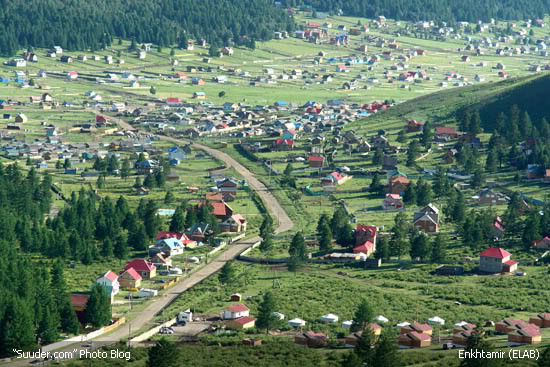      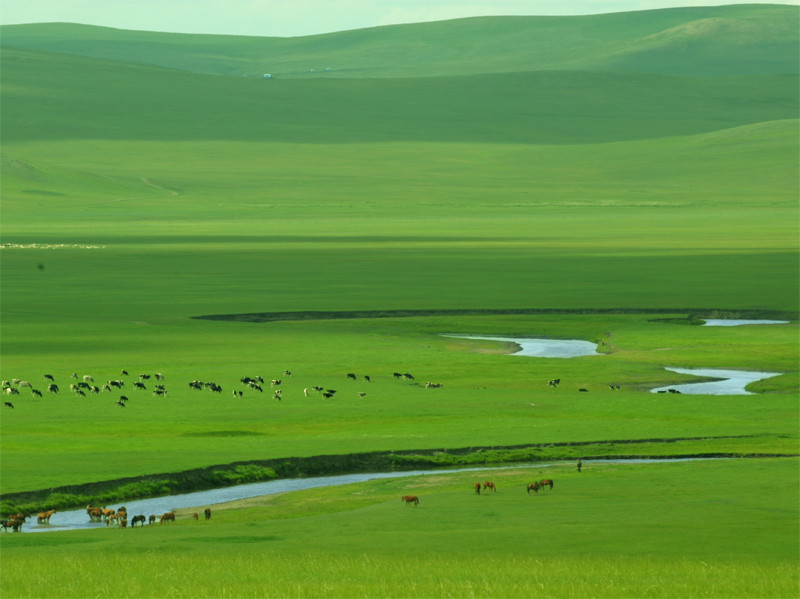    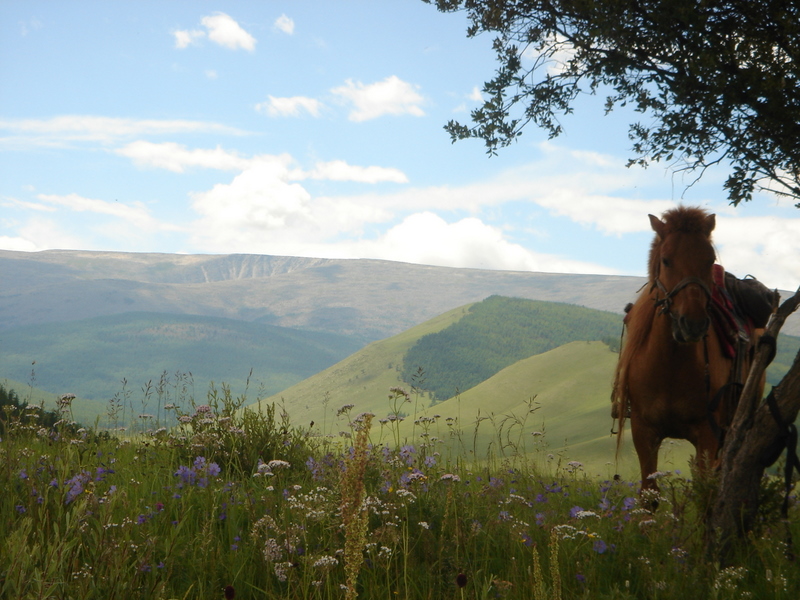 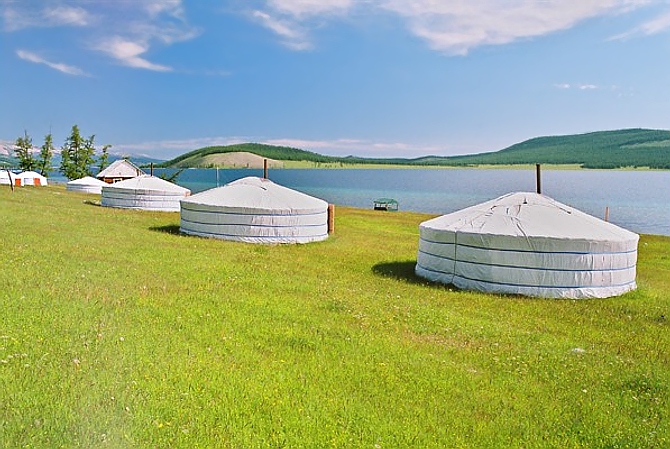    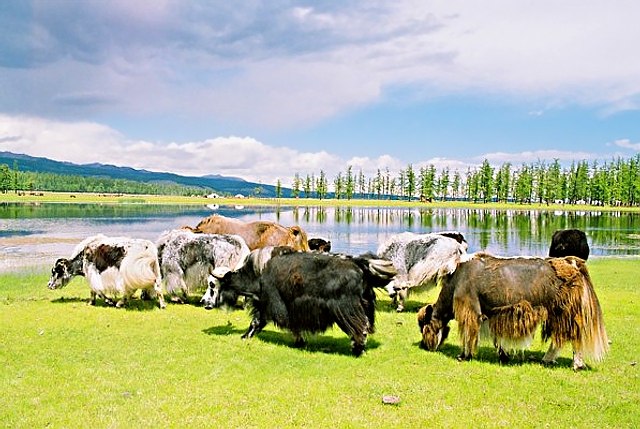   |
Posted By: lionmaster
Date Posted: 12-Dec-2013 at 17:03
       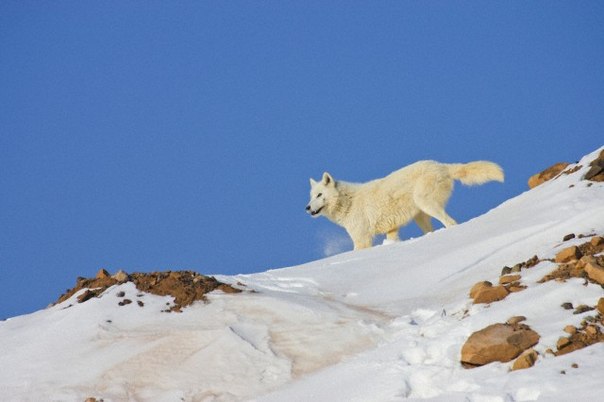        |
Posted By: lionmaster
Date Posted: 12-Dec-2013 at 17:25
|
The Hunnu and Mongol connection A new thesis paper by Kim K. et al. A western Eurasian male is found in 2000-year-old elite Hunnu cemetery in Northeast Mongolia. Am J Phys Anthropol. 2010 Jul;142(3):429-40. doi: 10.1002/ajpa.21242., is helping to clarify the relationship between the Hunnu, and prehistoric and modern Mongols. The genetic analysis performed by Keyser-Tracqui et al. (2003a, 2003b) found that the majority of the Hunnu mtDNA sequences belong to predominately northern Asian haplogroups, however a few (11%) belong to predominately Europeans haplogroups. Other studies have shown the Japanese genetic affinity with Mongols as well, between the Hunnu and East Asians including the Japanese (Using pairwise genetic distance (FST) derived from mtDNA HVSI sequences to calculate between pairs of populations, these authors found the individuals buried in the Egiin Gol cemetery showed close affinity with other East Asians, including Mongolian, Northeastern Chinese, and Japanese). The Naadam Festival of Mongolia which centers around the three “men’s sports” of horse racing, wrestling and archery, practiced for centuries as intrinsic parts of nomadic life, is similar to the often seen Japanese equivalents of horse racing, sumo-wrestling and archery displays during shrine festivals events, such as the annual yabusame archery event held at Kamakura‘s Tsurugaoka Hachiman-gu Temple. The Liaoning sample dates from the second to third century AD. According to archaeological and historical evidence, the individuals buried at this cemetery might the descendants of the Donghu people, who, according to Chinese accounts, were a Mongolic nomadic people who occupied northeastern China and were conquered by the Hunnu in 150 BC. These people were later broken into the Syambi Empire, who have historic ties to the Hunnu and modern Mongolian peoples (Di Cosmo, 2002).  |
Posted By: lionmaster
Date Posted: 12-Dec-2013 at 18:01
|
facial reconstruction of Huns of Europe by Hungarian anthropologists.  |
Posted By: lionmaster
Date Posted: 12-Dec-2013 at 19:09
|
facial reconstruction of a Gokturk. 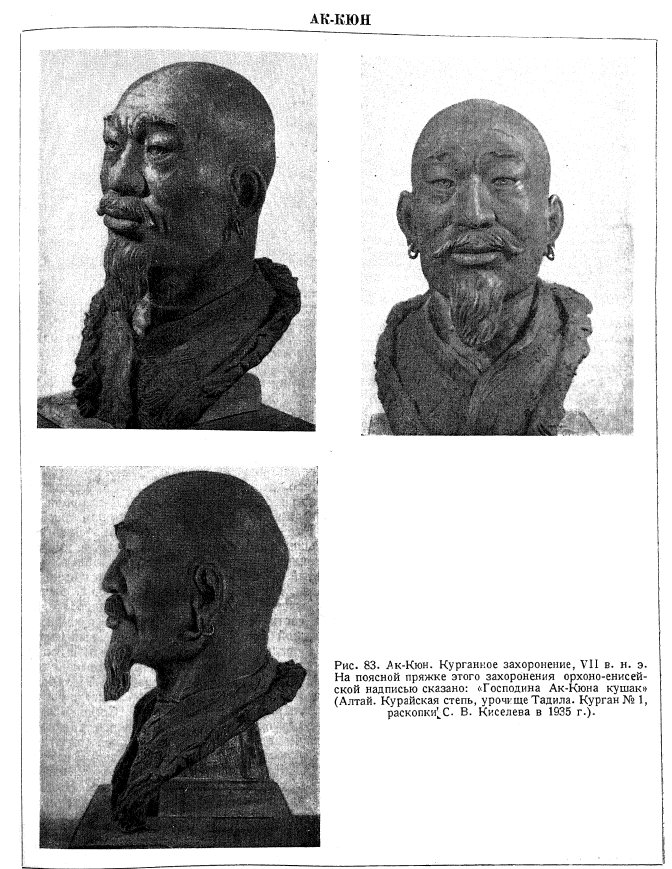 facial reconstruction of the great Mongol conqueror Tamerlane (Timur).  |
Posted By: lionmaster
Date Posted: 12-Dec-2013 at 19:24
|
Mongolian wrestlers are using their warrior spirit and fighting skills to conquer the national sport of Japan - sumo wrestling. Starting in 1991, Mongolians began to become especially dominant in sumo, as of 2005, Mongolians composed roughly 5% of all ranked sumo wrestlers, making them more than 60% (37 out of 61) of non-Japanese rikishi in Japan. In a 2009 survey conducted by a Japanese statistical agency, of the four sumo wrestlers named as most famous by Japanese people, three were Mongolian. Asashoryu, from Mongolia, the 68th yokozuna (sumo's highest rank) in the history of Sumo. 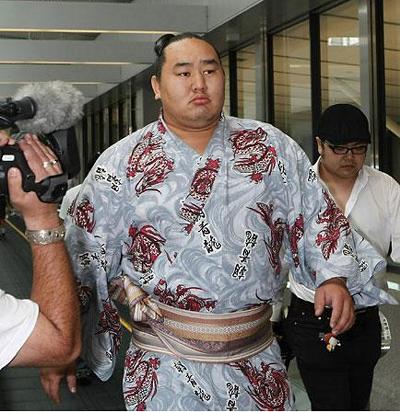 Hakuho, from Mongolia, the 69th yokozuna in the history of Sumo.  Harumafuji, from Mongolia, the 70th yokozuna in the history of Sumo. 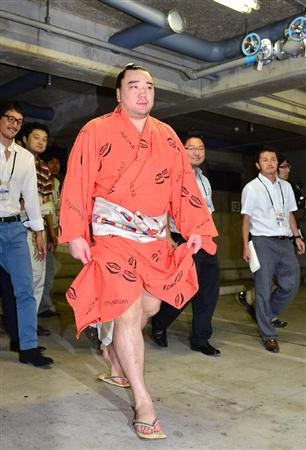 |
Posted By: lionmaster
Date Posted: 12-Dec-2013 at 19:55
|
Vasilii Milankhanov, a legendary freestyle wrestler of Soviet, ethnic Mongolian.  Boris Budaev, a notable Soviet freestyle wrestler, ethnic Mongolian. He won the title "World Freestyle Wrestling the King of Kings" in 1979, European champion in 1982, Soviet champion in 1985, World Champion in 1989. 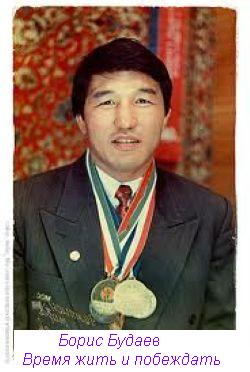 |
Posted By: lionmaster
Date Posted: 12-Dec-2013 at 20:01
|
Batu Khasikov, a notable Russian kickboxer and martial artist, ethnic Mongolian. He is the ISKA, WAKO PRO, WKA and W5 K-1 World Champion, WAKO PRO European Champion, 3 times Russian Champion in kickboxing, winner of "Battle of Champions" (Russian Union of Martial Arts) and "Battle of Moscow".  |
Posted By: lionmaster
Date Posted: 12-Dec-2013 at 20:18
|
MMA (Mixed Martial Arts) in China are dominated by Mongols, the top MMA fighters in China are all Mongols including Geriletu (格日乐图), Chingger (青格勒), Bat (巴特), Mandukh (张铁泉), Otgiin-Baatar (敖特根-巴特尔), Bulag (宝力高). Bulag (宝力高), a top Kickboxing, Sanda, and MMA fighter in China, ethnic Mongolian. He was "the King of Sanda" champion in 2002 and 2003, the WKA ( World Kickboxing Association) heavyweight champion in 2008 and 2010, and the current Art of War MMA Championships "undefeated champion". He defeated the Chinese legendary Sanda master Liu Hailong (柳海龙) in the 9th National Games of the PRC '2001.  |
Posted By: lionmaster
Date Posted: 12-Dec-2013 at 21:04
|
Mongolia has won 45 Wrestling World Championships medals and 19 Gold medal in World Sambo Championships untill 2013. Boldpüreviin Sugarjargal, a notable Mongolian wrestler, he won the gold medal in 2013 World Brazilian jiu-jitsu Championships in men's super-heavyweight and openweight. Jujutsu was first introduced in Mongolia in 2007.  |
Posted By: Bushido
Date Posted: 13-Dec-2013 at 10:14
|
昭和の時代なのでハッキリと覚えていませんが、「金髪妻」か「金髪妾」という題名の3流ポルノ映画があったような記憶があります。この映画は見ていませんのでストーリーは知りませんが、多分現実的には一般の日本男性には手が届かない金髪の白人女性を扱った映画で、白人コンプレックスというか白人女性願望の日本人男性向けの妄想映画だったと思います。 しかし、あのルーシーを侵略、蹂躙したモンゴル人の場合は現実に「ルーシーの支配者」に成った訳ですから、北欧スウェーデン系のマリア・シャラポアとかシルヴィ・ヴァルタンのような女性を下の文にあるように「じっくりと眺めた」だけでそのまま手を付けずに紳士的に扱っていたとはとても思えません。ちょっと下品な表現に成りますが、ルーシーの白人女性をキプチャック汗国(ジュチウルス)のハーン達がやり捲った筈と思います。 モンゴルのハーンが金髪女性を朝貢の対象としてロシア人に義務付けた事は想像に難くありません。例えば(2)で「モスクワ公イワン一世(在位1325年~41年)はモンゴルのハーンに賄賂を贈り」とありますが、賄賂の中身に金髪のルーシーの女性も当然の如く含まれていたでしょう。 そして、ルーシーの女性達がモンゴル人の性奴隷にされた事で、モンゴロイドにシンパシーを持ったり、残虐性、多淫性を持ったモンゴル人のDNAを受け継いだ今日のロシア人として確立されたものだと思います。 ただし、マリア・シャラポアの両親は沼沢が多かった為、モンゴル軍の強姦の被害に遭わなかったと言われている「ベラルーシ(純潔のロシア)」の出身ですので、スウェーデン人の形質が色濃く残っている女性だと思われます。 上記の様な状況を思わせる本の一部を抜粋します。 |
Posted By: Bushido
Date Posted: 13-Dec-2013 at 10:22
|
ロシア遠征の早い時期に、バトゥの兵士がオレーグという名の若いロシア人の命を助けたことがあった。バトゥはオレーグがとても美しいと思ったので、その捕虜を愛撫せずにはいられなかった。ハーンがオレーグをなではじめると、この若者はハーンの両手をはらいのけた。これでわれに返り、バトゥは護衛に命じてオレーグを外につれていかせ、殺させた。 ロシア人にとっては、モンゴル人は胸の悪くなるような存在だった。モンゴル人は「やせて、顔は青白く、骨ばった頬(ほお)は張り、鼻は短くゆがんでおり、あごは尖って目立ち、おとがいは低くくぼみ、歯は長く少ない」と評した記述も残っている。(転載ここまで) そして別の本に書いてありましたが、DNA調査でジンギスカンのDNAを持った子孫は今日世界中に1600万人いるそうです。この意味は次のような事だと思います。モンゴル軍は侵略国で多くの女性を強姦しましたが、その地で「ハーン」に成った者及びその後継者は、ジンギスカンの末裔という事で、日本でいえば皇族のようなものです。そのような末裔の者達が侵略戦闘後のモンゴル兵士のように侵略地の女性を片っ端から強姦していたとはとても思えません。 1600万人の意味は、創った多くの「汗(ハーン)国」でジンギスカンの末裔が「ハーン」として君臨した時、先述したように侵略国から処女の女性を毎年朝貢させた事でジンギスカンの遺伝子が増えて行ったと考えた方が自然だと思われます。 それと面白いのは、オゴディはモンゴルの都城カラコルムに居ながら、多くの侵略戦争の指揮を採りましたが、モンゴル軍がルーシー、東欧等で捕えた白人女性をオゴディの元に戦利品として献上したという文献を見た事がありません。今のモンゴルの人々の写真、動画を見ても白人との混血らしき人も皆無のようです。どうも、モンゴル人は侵略地で遺伝子をまき散らしただけで、自国にまでは戦利品献上の発想は無かったようです。 (私の勉強不足でそのような記述があるかも知れません) ロシア人の写真を見ても余りモンゴルの血(形質)を感じない人にお伝えします。確かに世界フィギアスケート2011でロシアの女性選手を見られていた人は分かったでしょうが、ロシア人は思ったほどモンゴル人の血が入っているようには見えません。政治家で言えばメドヴェージェフ大統領もそうです。 |
Posted By: lionmaster
Date Posted: 13-Dec-2013 at 10:45
|
In today's China, few ethnic groups such as Mongol, Manchu and Korean are higher educated than Chinese. There are many notable scientists, artists, politicians in China come from Mongol background, including Li Siguang(李四光), Bayuzao(巴玉藻), Xu Rigan(旭日干), Mao Huaiqing(冒怀庆), Sa Benmao(萨本茂), Yang Shixian(杨石先), Hou Yimin(侯一民) ...... Hou Yimin(侯一民), an ethnic Mongol in China, one of the greatest artists of China.  |
Posted By: lionmaster
Date Posted: 13-Dec-2013 at 10:54
 |
Posted By: lionmaster
Date Posted: 13-Dec-2013 at 10:59
|
Amarkhuu Borkhuu (Борхүүгийн Амархүү), an ethnic Mongol in Russia. He rose to popularity in Russia after winning Narodniy Artist 3 (2006), the Russian version of Pop Idol. In 2010, he won the Russian Idol and starred in a Mongolian-Russian film “Operation ‘Tatar’”.  |
Posted By: lionmaster
Date Posted: 13-Dec-2013 at 11:02
|
Kirsan Ilyumzhinov (Үлүмҗин Кирсан), is a Mongol multi-millionaire businessman and politician. He was the President of the Republic of Kalmykia in the Russian Federation from 1993 to 2010, and he has been the President of FIDE (or the "World Chess Federation"), the world's pre-eminent international chess organization, since 1995.  |
Posted By: lionmaster
Date Posted: 13-Dec-2013 at 11:10
|
The World Top Mental Calculation, Memory & Photographic reading Olympics was organized in Antalya city of Turkey on November 24-25, 2012. Representing Mongolia have successfully participated achieving 2 Gold and 1 Silver medals, moreover breaking a new world record in "Flash Numbers".  |
Posted By: lionmaster
Date Posted: 14-Dec-2013 at 08:56
|
a Mongolian folk song [TUBE]cygyUre5pr8[/TUBE]
|
Posted By: lionmaster
Date Posted: 15-Dec-2013 at 20:11
|
To be continued...... |
Posted By: lionmaster
Date Posted: 15-Dec-2013 at 20:16
|
1961 Italian movie "the Mongols"  |
Posted By: lionmaster
Date Posted: 15-Dec-2013 at 20:21
|
Mongolian cavalry charge   |
Posted By: lionmaster
Date Posted: 15-Dec-2013 at 20:28
|
a 1963 Soviet stamp 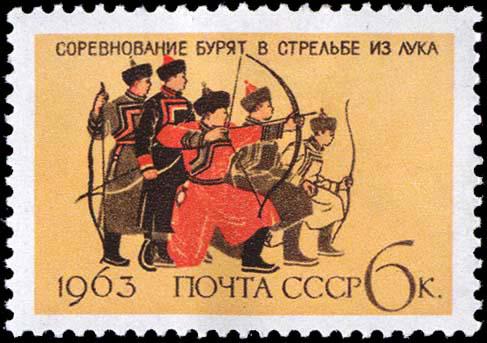 |
Posted By: lionmaster
Date Posted: 15-Dec-2013 at 20:29
|
Lenin and his Mongol brothers 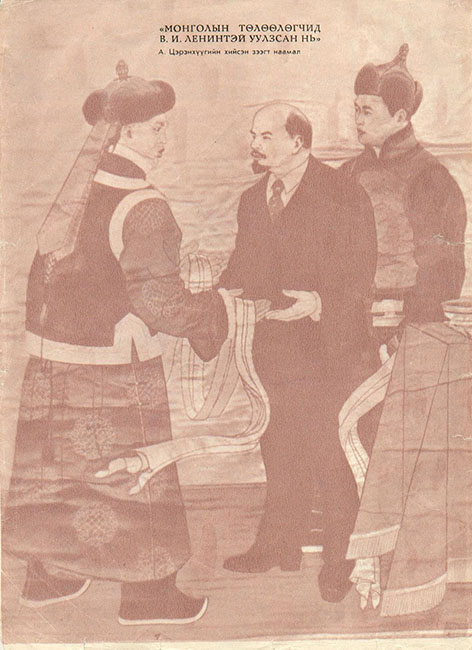 |
Posted By: lionmaster
Date Posted: 15-Dec-2013 at 20:35
 |
Posted By: lionmaster
Date Posted: 15-Dec-2013 at 20:38

|
Posted By: lionmaster
Date Posted: 15-Dec-2013 at 20:41

|
Posted By: lionmaster
Date Posted: 15-Dec-2013 at 20:44
 |
Posted By: lionmaster
Date Posted: 15-Dec-2013 at 20:50

 |
Posted By: lionmaster
Date Posted: 15-Dec-2013 at 20:59

  |
Posted By: lionmaster
Date Posted: 15-Dec-2013 at 21:08

|
Posted By: ak4ak
Date Posted: 16-Dec-2013 at 04:24
today the Mongol tatar population in Russia is over 8 million. In China there are 6 million Mongols however most of them are fake, in China the minority groups have higher social position than Chinese, they have many priorities over Chinese, for example if a minority take loan from a bank, the bank charges 2.88% less interests than the amount it charges a Chinese. minorities are allowed to have 2 children while Chinese are only allowed to have 1. that is why millions of Chinese live in Inner Mongolia claimed themselves as "Mongol", these people are called "ID Mongols", the Chinese government counts those people as part of Mongol population, thats why the population of Mongols in China appears 6 million, but the real Mongols in China are no more than half million.
|
Posted By: Ollios
Date Posted: 16-Dec-2013 at 13:39
That's nice, I have known Mongols in China but can you explain others Afhganistan Russia(Siberia) Russia(Caucausia) ------------- Ellerin Kabe'si var, Benim Kabem İnsandır |
Posted By: lionmaster
Date Posted: 16-Dec-2013 at 18:37
in 1917 when Soviet Union was established there were nearly 10 million Mongols in Soviet, later they increasingly merged with Russians. |
Posted By: lionmaster
Date Posted: 16-Dec-2013 at 18:48
Mongols are everywhere, Hazara Mongols in Afghanistan, Kalmykia, Buriatia, Tuva, Altai are the 4 Mongolian Republics in Russia Federation. plus Mongols also live in Ukraine, Kazakhstan, USA, Japan, Korea, India(the Mughals). |
Posted By: Snafu
Date Posted: 17-Dec-2013 at 05:24
Khitans, from 12th century painting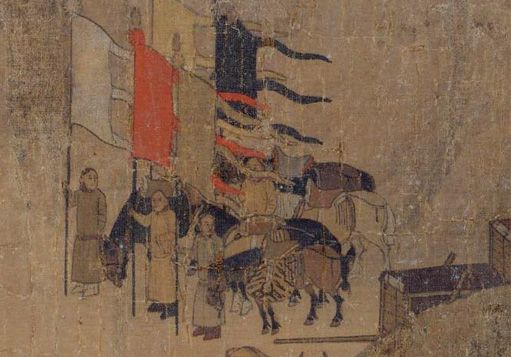 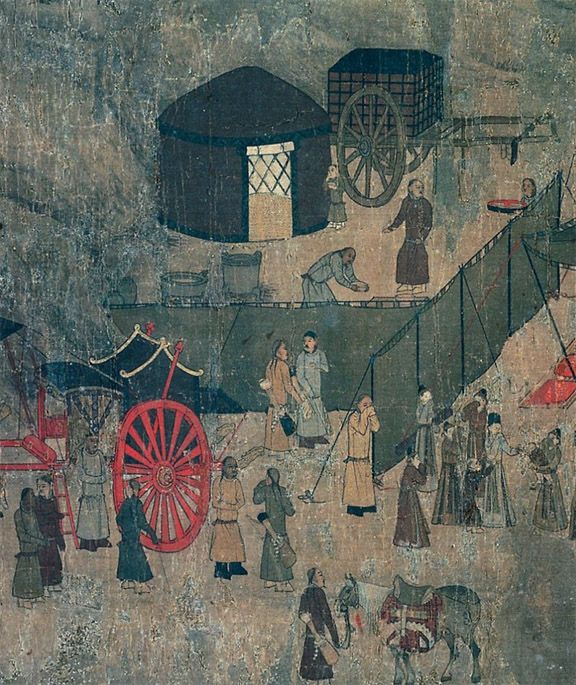 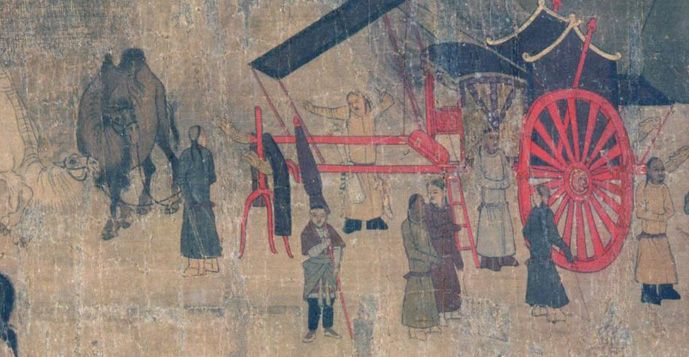 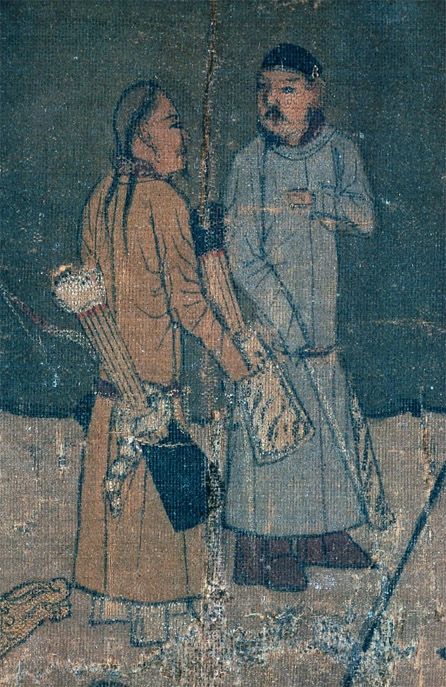 Nomad ladies leading camel 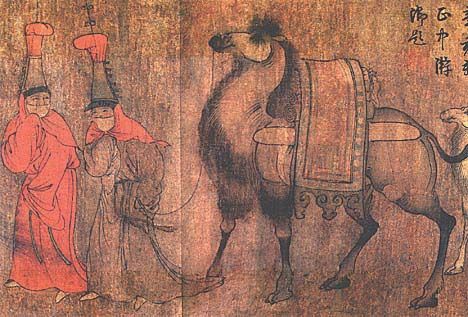 Nomads from a 13th century painting  |
Posted By: lionmaster
Date Posted: 17-Dec-2013 at 05:27
|
Gold Belt Buckle, Mongol, 3rd-2ndC BCE,from Siberia, 3 1/8” high. Animal-Style: Eurasian Steppes throughout the 1st Millenium. 
|
Posted By: lionmaster
Date Posted: 17-Dec-2013 at 05:28
|
Eagle-shaped gold crown. This collection was produced during the Warring States period and unearthed from the Hunnu grave in Hangjinqi, Shouthern Mongolia. At the top of the Crown is an eagle spreading its wings, and in the middle is a painting of four wolves, four sheep, a tiger, sheep and horsey. The technological level of this gold crown is high. It represents the highest level of precious metal manufacturing technology of Hunnu in the Warring States period.  |
Posted By: lionmaster
Date Posted: 17-Dec-2013 at 05:30
|
Ornamental plaque with abstract animal design, 3rd to 4th century CE.An inscription is located on the back side of this early Tuoba Sumbe piece, a three-letter line that reads: "Yituo's gold."It is generally believed that the Hunnu were for the most part absorbed by the Sumbe after the break-up of their empire. One scholar has noted that the workmanship of this plaque appears to be Hunnu, but the motif is distinctly Sumbe, 1 an observation shich may suggest that many aspects of Hunnu culture remained distinct many centuries after the dissolution of their empire.Adam T. Kessler, Empires Beyond the Great Wall: The Heritage of Genghis Khan (Los Angeles: Natural History Museum of Los Angeles County, 1993), p. 79.  |
Posted By: lionmaster
Date Posted: 17-Dec-2013 at 05:31
|
Arch decoration for a saddle, Mongolian, 13th - 14th century. This arch decoration made of gold leaf is part of a set of six gold facings used to decorate a wooden saddle discovered in the tomb of a young Mongol noblewoman. 1 Like all Central and East Asian nomadic peoples, the Mongols were passionate about their horses; furthermore, they to accorded a higher status and more physical freedom to women than the Chinese. For these reasons, it is not surprising for equestrian equipment to be found in the tomb of a Mongol female, although a saddle decorated with gold such as this is certainly a rare object. The saddle ornaments found in the tomb were crafted by hammering the gold leaf over a relief-carved mold. The decorative motif is that of a reclined deer framed in a four-petal blossom lozenge and surrounded by vines, leaves and flowers. Adam T. Kessler, Empires Beyond the Great Wall: The Heritage of Genghis Khan (Los Angeles: Natural History Museum of Los Angeles County 1993), p. 160.  |
Posted By: lionmaster
Date Posted: 17-Dec-2013 at 05:33
|
Golden Horde belt currently at the Hermitage Museum. The Hermitage Museum's website has this belt dated at 13th - early 14th century. The "Treasures of the Golden Horde" exhibition review at Cloudband.com has it as mid-13th century (1227 to mid 1270ies). The belt is described at the Russian version of the relevant Hermitage page as Gold, consisting of seventeen objects. According to the same reference, the belt belonged to a representative of the house of Batu-Khan.   |
Posted By: lionmaster
Date Posted: 17-Dec-2013 at 05:41
     |
Posted By: lionmaster
Date Posted: 17-Dec-2013 at 05:49
  |
Posted By: lionmaster
Date Posted: 17-Dec-2013 at 05:53
 
|
Posted By: lionmaster
Date Posted: 17-Dec-2013 at 05:58

|
Posted By: lionmaster
Date Posted: 17-Dec-2013 at 06:06

|
Posted By: lionmaster
Date Posted: 17-Dec-2013 at 06:14

|
Posted By: lionmaster
Date Posted: 17-Dec-2013 at 06:29
|
The siege of Zhongdu (modern Beijing) in 1213-14  |
Posted By: lionmaster
Date Posted: 17-Dec-2013 at 06:31
|
Tamerlane defeating the Mamluk of Egypt, 1399.  |
Posted By: lionmaster
Date Posted: 17-Dec-2013 at 06:34
|
Tamerlane and his forces advance against the Golden Horde, Khan Tokhtamysh.  |
Posted By: lionmaster
Date Posted: 17-Dec-2013 at 06:36
|
The Battle of Ankara (1402) decimated Ottoman power in Anatolia. Bayazid I, who might very well have been remembered in history as the Napoleon of the era, was captured by Tamerlane and died in captivity. The eruption of Tamerlane had taken place just as Constantinople was negotiating a surrender of the city to Bayazid. The Battle of Ankara postponed the conquest of the Byzantine capital by more than fifty years. Sultan Bayezid of Ottoman Empire prisoned by the Mongol conqueror Tamerlane, 1878, depicting the capture of Bayezid by Tamerlane.  |
Posted By: lionmaster
Date Posted: 18-Dec-2013 at 18:54
|
Khulegu Khan’s Mission  |
Posted By: lionmaster
Date Posted: 18-Dec-2013 at 18:59

|
Posted By: lionmaster
Date Posted: 18-Dec-2013 at 19:10

|
Posted By: lionmaster
Date Posted: 22-Dec-2013 at 19:07
The Hun and Mongol connectionA new thesis paper by Kim K. et al. A western Eurasian male is found in 2000-year-old elite Hun cemetery in Northeast Mongolia. Am J Phys Anthropol. 2010 Jul;142(3):429-40. doi: 10.1002/ajpa.21242., is helping to clarify the relationship between the Hun, and prehistoric and modern Mongols, and to other ethnic groups, such as the Turks, Europeans, Chinese, Liaoning and Japanese populations. Several indicators suggest the cemetery of Borkhan Tolgoi represented only a subset of the Hun community, who appear to have been high-status individuals. These include low-burial frequency, funerary artifacts, elaborate practices, including the use of coffins and chests, and the depth of the graves (two to five meters). The genetic analysis performed by Keyser-Tracqui et al. (2003a, 2003b) found that the majority of the Hun mtDNA sequences belong to predominately Asian haplogroups, however a few(11%) belong to predominately Europeans haplogroups. The DNA analyses [on three skeletons found in a 2,000-year-old Hun elite cemetery in Duurlig Nars of Northeast Mongolia] revealed that one subject was an ancient male skeleton with maternal U2e1 and paternal R1a1 haplogroups. This is the first genetic evidence that a male of distinctive Indo-European lineages (R1a1) was present in the Hun of Mongolia. This might indicate an Indo-European migration into Northeast Asia 2,000 years ago. Other specimens are a female with mtDNA haplogroup D4 and a male with Y-SNP haplogroup C3 and mtDNA haplogroup D4. Those haplogroups are common in Northeast Asia (D4 is frequently detected across Japan). Egiin Gol cemetery features 219 skeletal material from 99 individuals buried from the third century B.C. to the second century A.D. The necropolis was arranged into three main sections that roughly correspond to temporal ordering as measured through AMS carbon-14 dating (Fig. 8.1). Section A is the oldest followed by Section B and Section C. Section A contains a number of “double burials” near graves marked with higher status individuals. This practice was quite common among peoples of the Scytho-Siberian tradition, including the Sakka (Yakuts)and the Bronze Age Pazyryk culture of the Gorny Altai in southern Siberia (Chikisheva,2000; Ricaut et al., 2004a, 2004b; Amory et al., 2006). This practice has been reported in Murail et al. (2000) who investigated part of the Egiin Gol cemetery. Section C of the necropolis is interesting as it corresponds to the end of the cemetery’s use and may be associated with a Turkish influence of the Hun tribe(Keyser-Tracqui et al., 2003a). Based on STR (short-tandem repeat) genetic markers(autosomal and Y chromosome) and mtDNA, Keyser-Tracqui et al. (2003a) found distinct signatures unique to this section of the necropolis. Specifically, they found markers of a Turkish origin and a characteristically kin grouping in Section C that would seem to indicate a demographic shift in the necropolis toward the end of the Hun Empire. Clearly from the cluster analysis, the Egiin Gol individuals show an affinity with the small sample of Mongol Turk from the 8th century A.D.Ricaut et al. (2010) also detected this unique signature in Section C using nonmetric cranial traits. Bennett and Kaestle (2006) also investigated the cemetery using mtDNA and included a greater diversity of populations that may be representative of the individuals buried at Borkhan Tolgoi. Using pairwise genetic distance (FST) derived from mtDNA HVSI sequences to calculate between pairs of populations, these authors found the individuals buried in the Egiin Gol cemetery showed close affinity with other East Asians, including Mongolian, Japanese, and Chinese, . This finding is similar to what Keyser-Tracqui et al. (2003) found using haplogroup data (89%of sequenced individuals belonged to Asian specific haplogroups) The analysis of 3D geometric morphometrictraits used in this dissertation also indicates a distinction among the Egiin Gol sample from the pooled Hun sample. The paper, establishes the following strong or close connections and genetic affinities: between the Hun and Bronze Age Mongols as well as modern Mongols ( This finding shows a clear line of descent from the Hun polity through to those people now inhabiting the modern nation-state of Mongolia); between the Hun (section C and at the end phase of the Egiin Gol necropolis) and Turks (of the 8th century) and the Pazyrk-Altai ancient Scythian remains ( ”Of importance to this dissertation, however, is the fact that, archaeologically, there is a material and cultural (and perhaps genetic) connection from Bronze Age Mongolia through the Uighur/Turk period, at least for the Egiin Gol valley, and perhaps throughout Mongolia during that period as well.”); between the Hun (Egiin Gol sample) and the Chandman, and who cluster strongest with Japanese, as well as Czech samples. [Note: The Chandman hail from mountainous basin and range country in eastern Khovd Aimag, western Mongolia, about 1,050 km west of the capital Ulaanbaatar. And higher dimension PCs did exhibit a relationship of the Chandman and Pazyryk people(who are closely related to the Siberian Tagar people)] and using FST values, the Hun-Mongol samples are similar to the Czech, and Jomon; between the Hun and the Sakka-related Yakuts, a pastoral people who inhabit areas of the Sakha Republic in eastern Siberia. It is widely believed that the Yakuts were the first settlers of the Altai-Baikal region of east Siberia (Amory et al.,2006) . The results for the autosomal and Y-STR loci indicate a close biological relationship among the ancient Egiin Gol sample and modern Mongolian samples; between the Hun and modern Mongols … with Liaoning (0.108), the Eastern Han (0.128), and the Qinghai (0.129). (Other studies have shown the Japanese genetic affinity with all three groups as well), and therefore between the Hun and East Asians including the Japanese (Using pairwise genetic distance (FST) derived from mtDNA HVSI sequences to calculate between pairs of populations, these authors found the individuals buried in the Egiin Gol cemetery showed close affinity with other East Asians, including Mongolian, Japanese, Chinese Han, and Northeastern Chinese). Between Hun and Xinjiang samples based on FST values. Therefore, although there may have been a component of the Hun that were not entirely Mongol, there is a strong connection for at least some segment of the Hun society. Note: The Liaoning sample dates from the second to third century AD. According to archaeological and historical evidence, the individuals buried at this cemetery might the descendants of the Donghu people, who, according to Chinese accounts, were a Mongolic nomadic people who occupied northeastern China. These people were later broken into the Xianbei Empire, who have historic ties to the Hun and modern Mongolian peoples (Di Cosmo, 2002). There is also a close relationship with samples from Qinghai, which span several periods, ranging from the Han through the Jin (265 – 420 CE). This area has also historically been a melting pot of peoples, having been home to the Xianbei, Turkic, and Mongols. In the PC plots, the Hun also group together with samples from the Eastern Han Empire (25 – 220 CE). This sample (Eastern Han) comes from several locations in Inner Mongolia … The affinity between the Hun sample and the Qinghai, Liaoning, and the Eastern Han is also seen in the distance matrices (Mahalanobis and R-matrix). After the Mongol Period and modern Mongolian sample, the next closest D2 distances are the Though not shown,the R-matrix shows this observation as well, as all three of these samples are positive, indicating some level of gene flow among these groups. ::: The Naadam Festival of Mongolia which centers around the three “men’s sports” of horse racing, wrestling and archery, practiced for centuries as intrinsic parts of nomadic life, is similar to the oft seen Japanese equivalents of horse racing, sumo-wrestling and archery displays during shrine festivals events, such as the annual yabusame archery event held at Kamakura‘s Tsurugaoka Hachiman-gu Temple.  |
